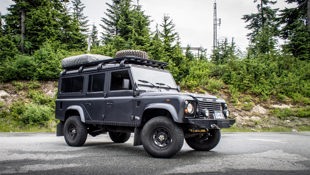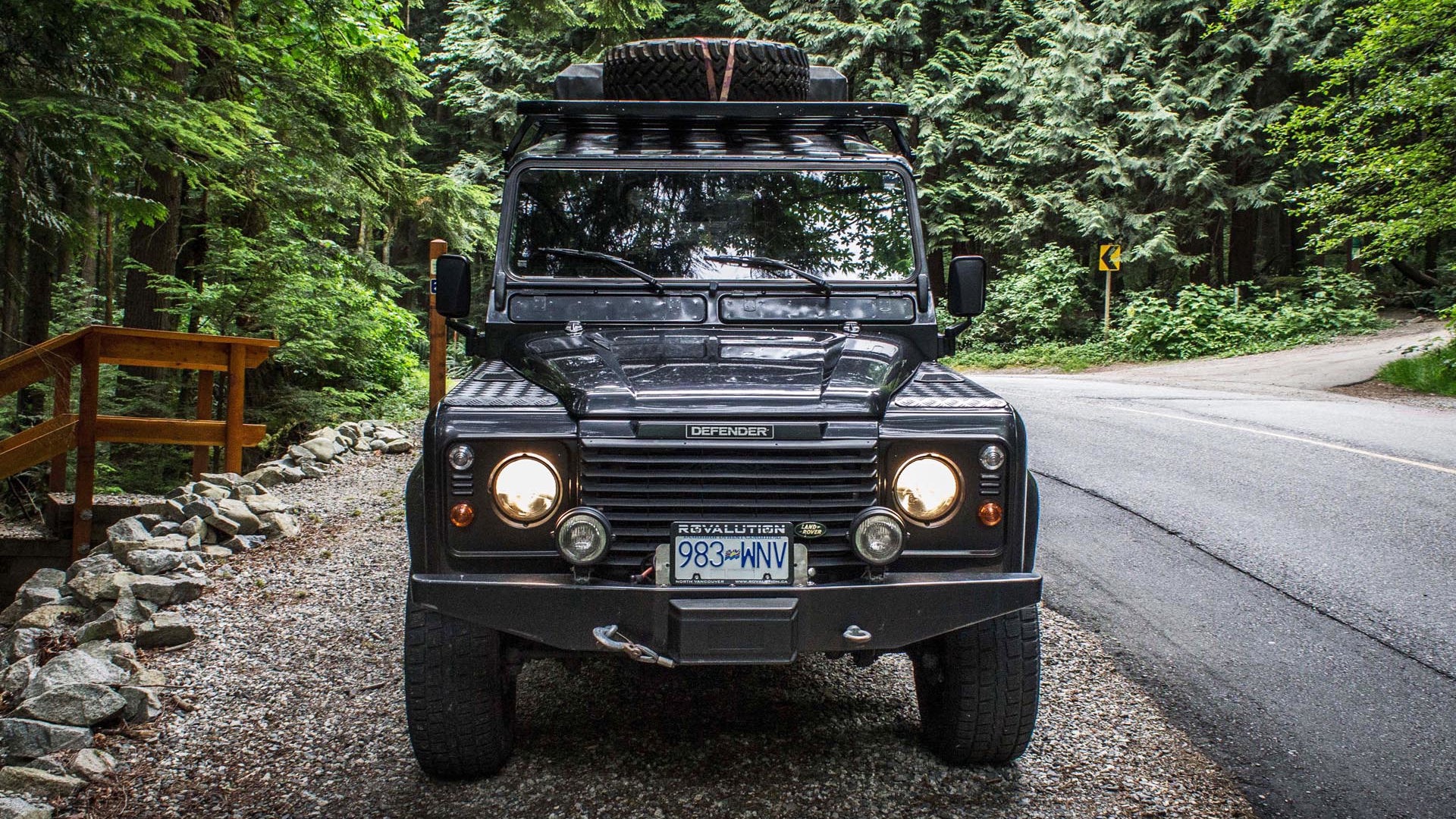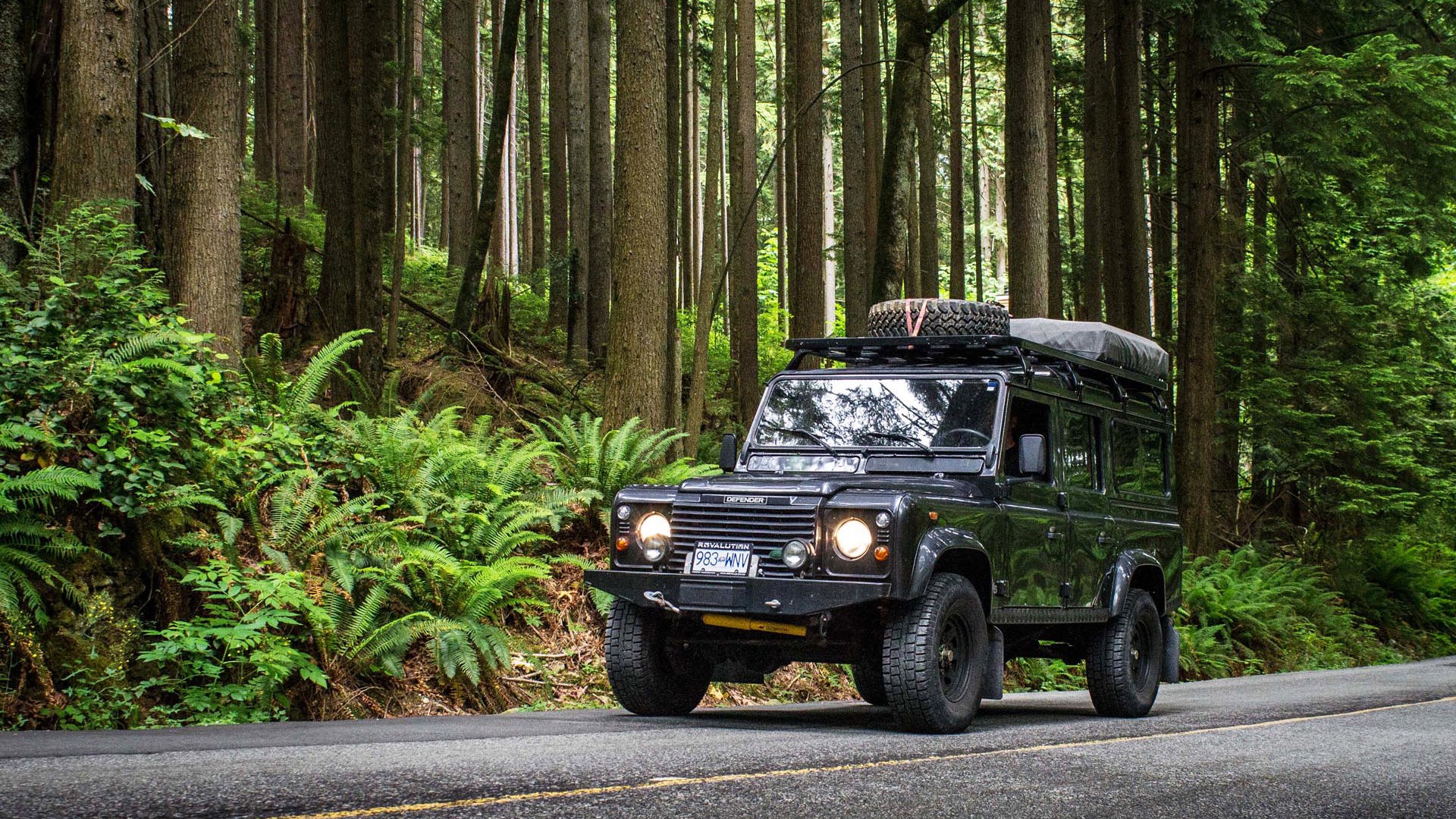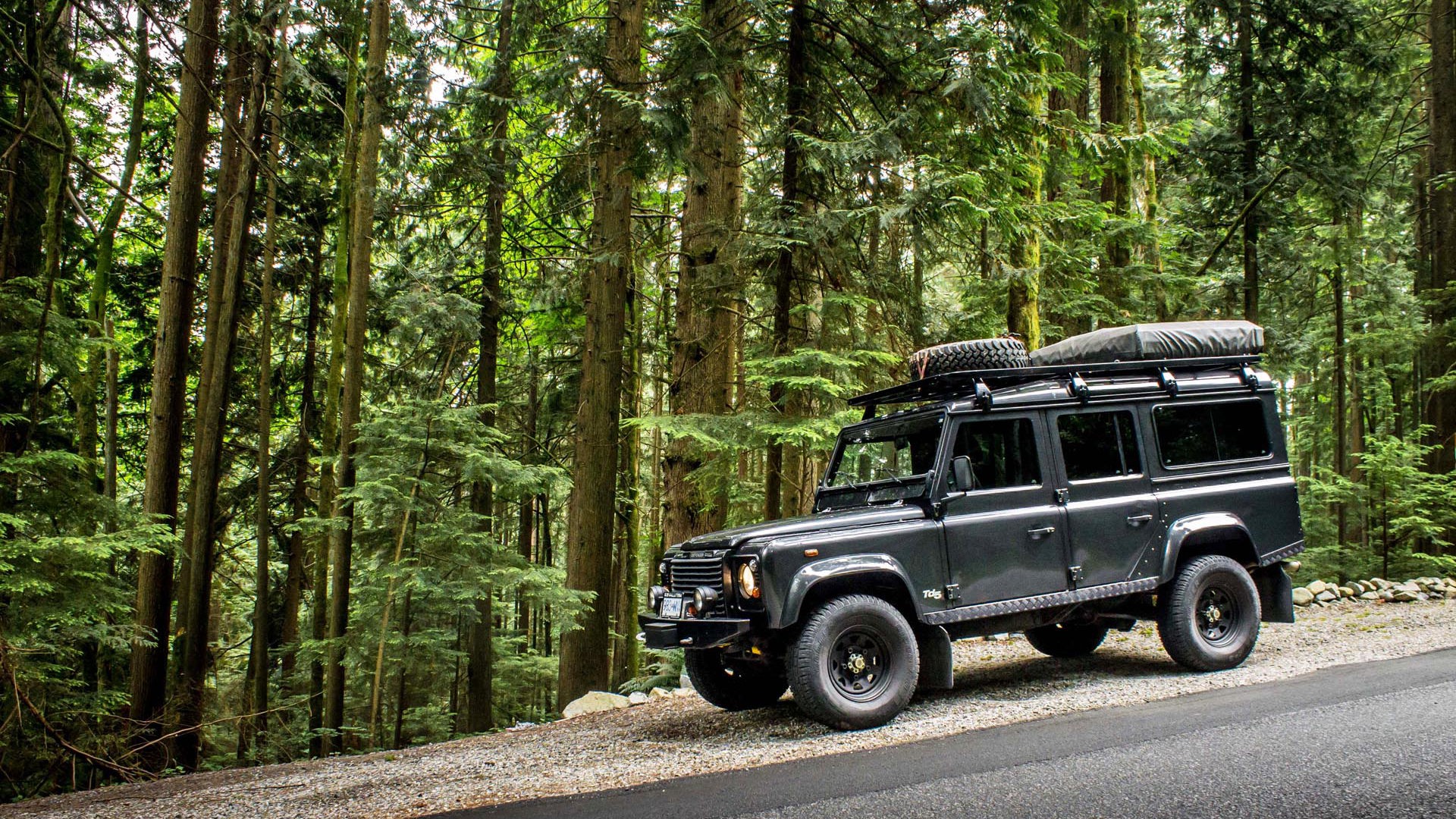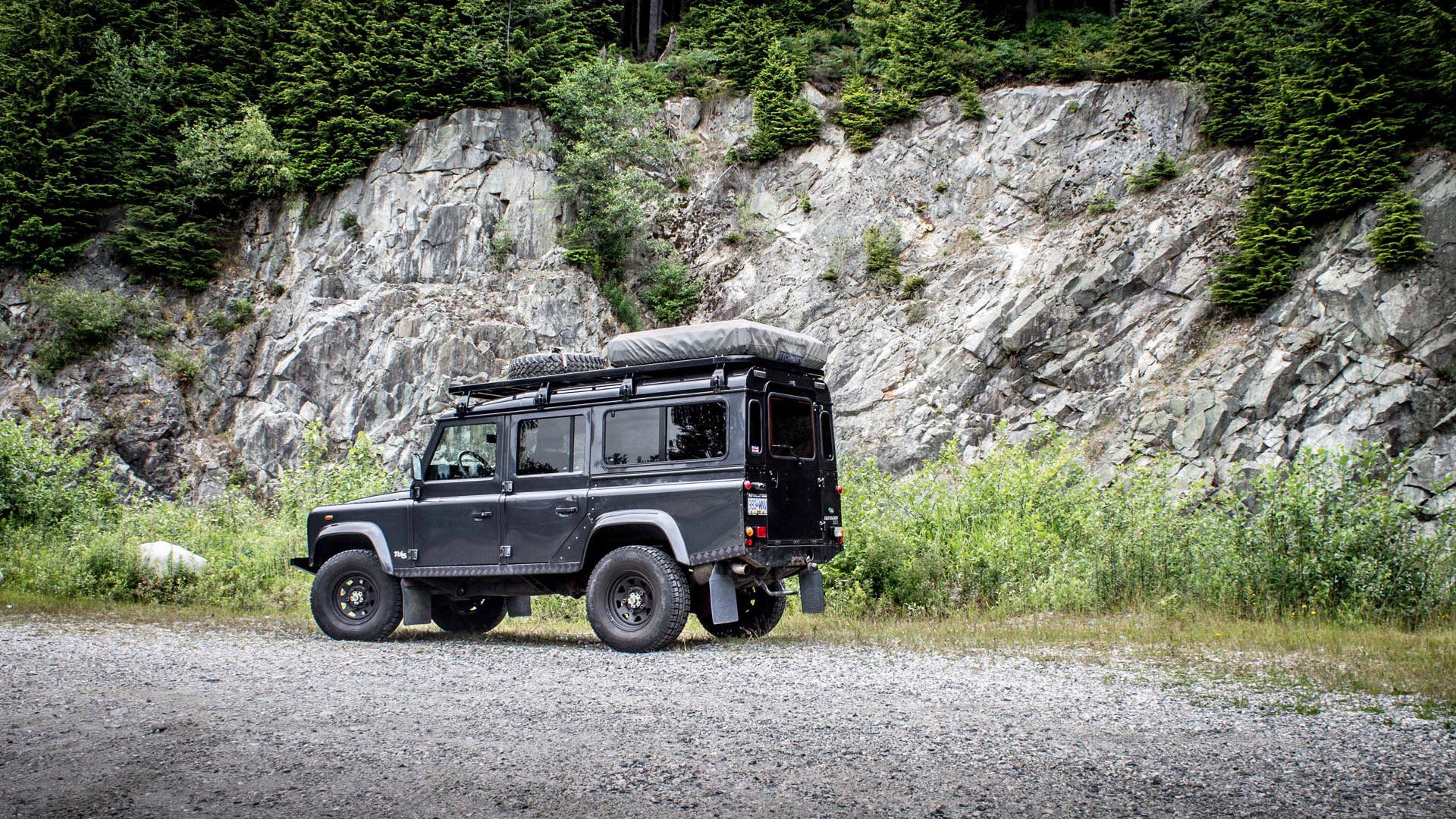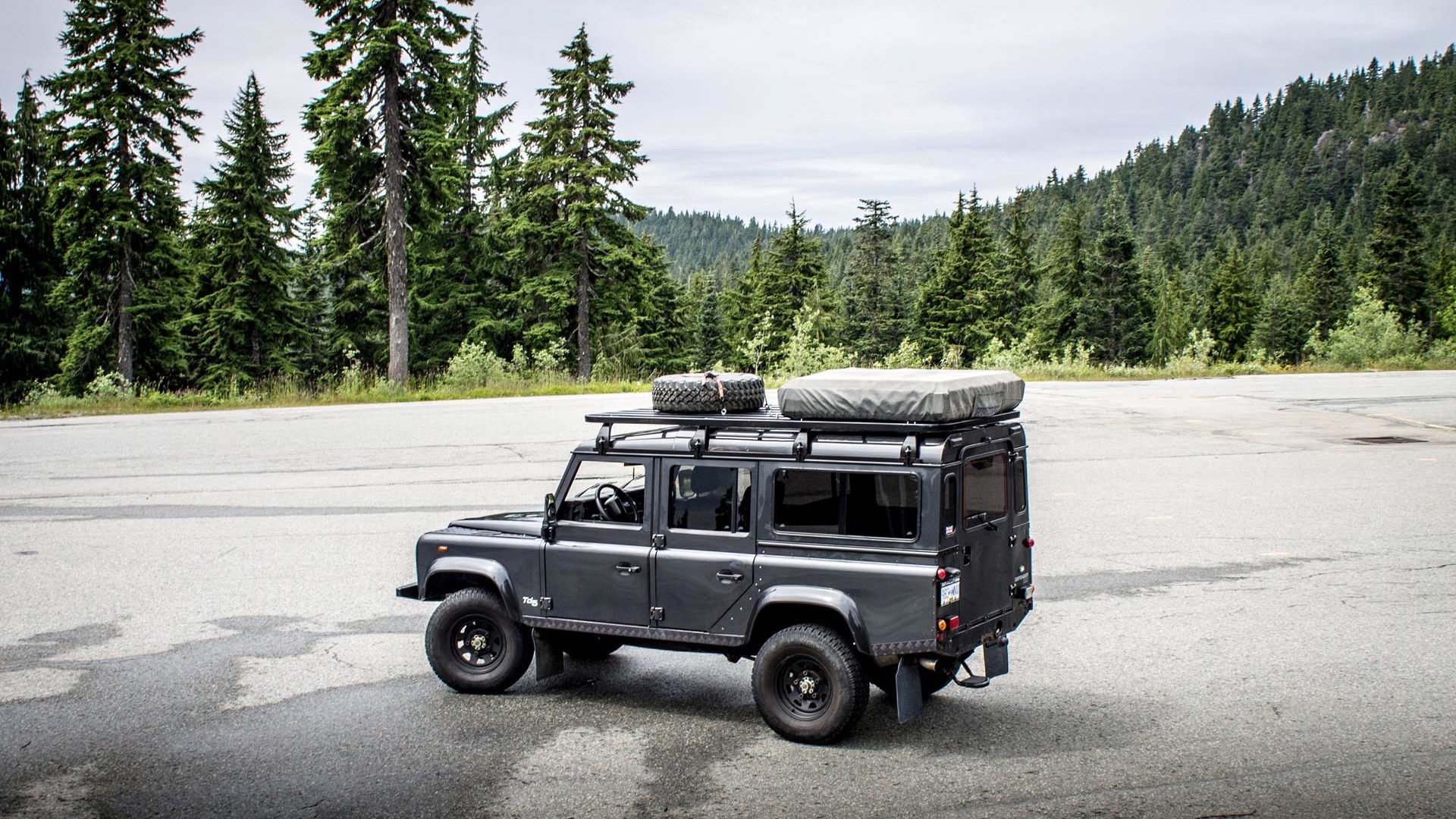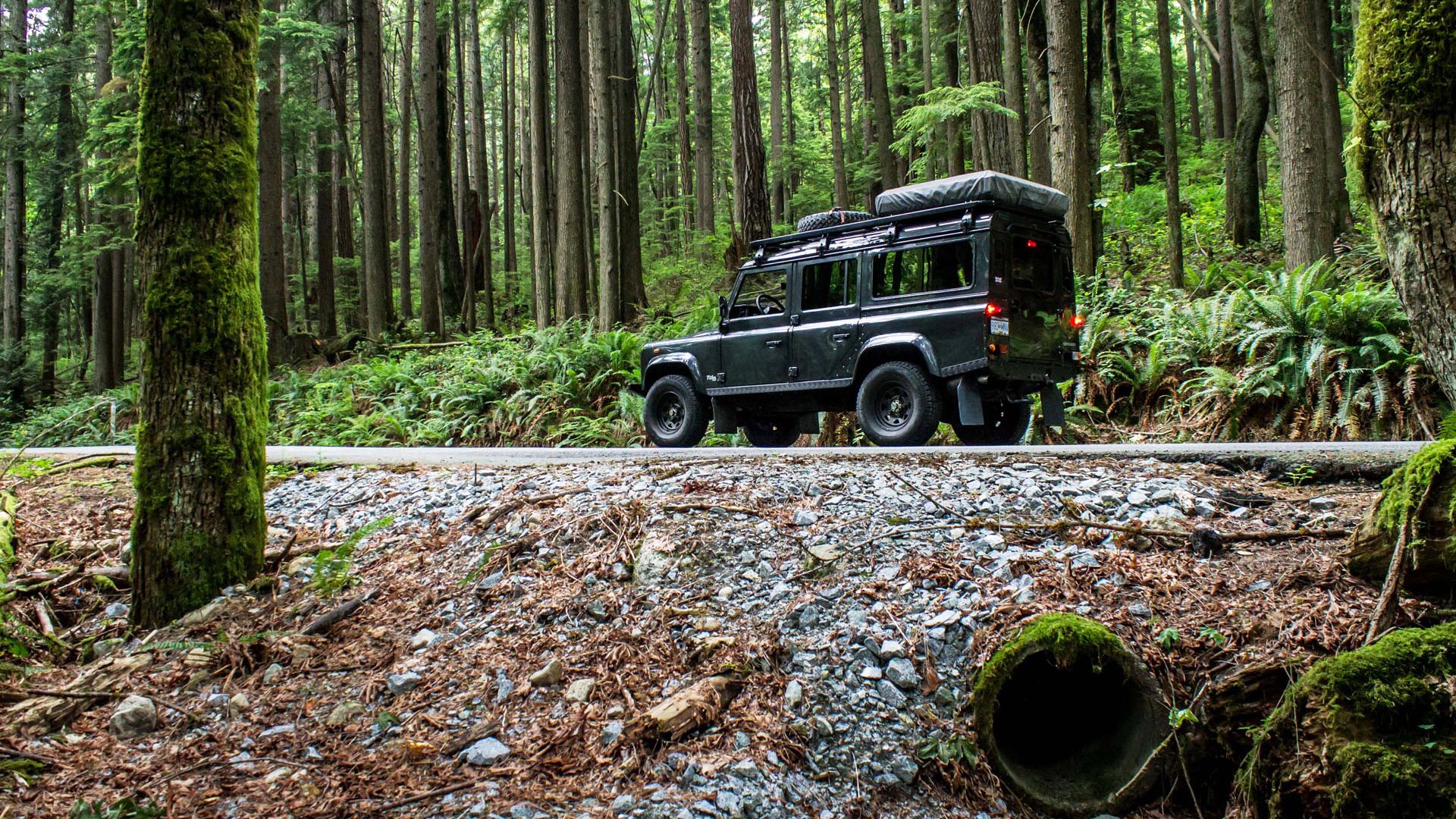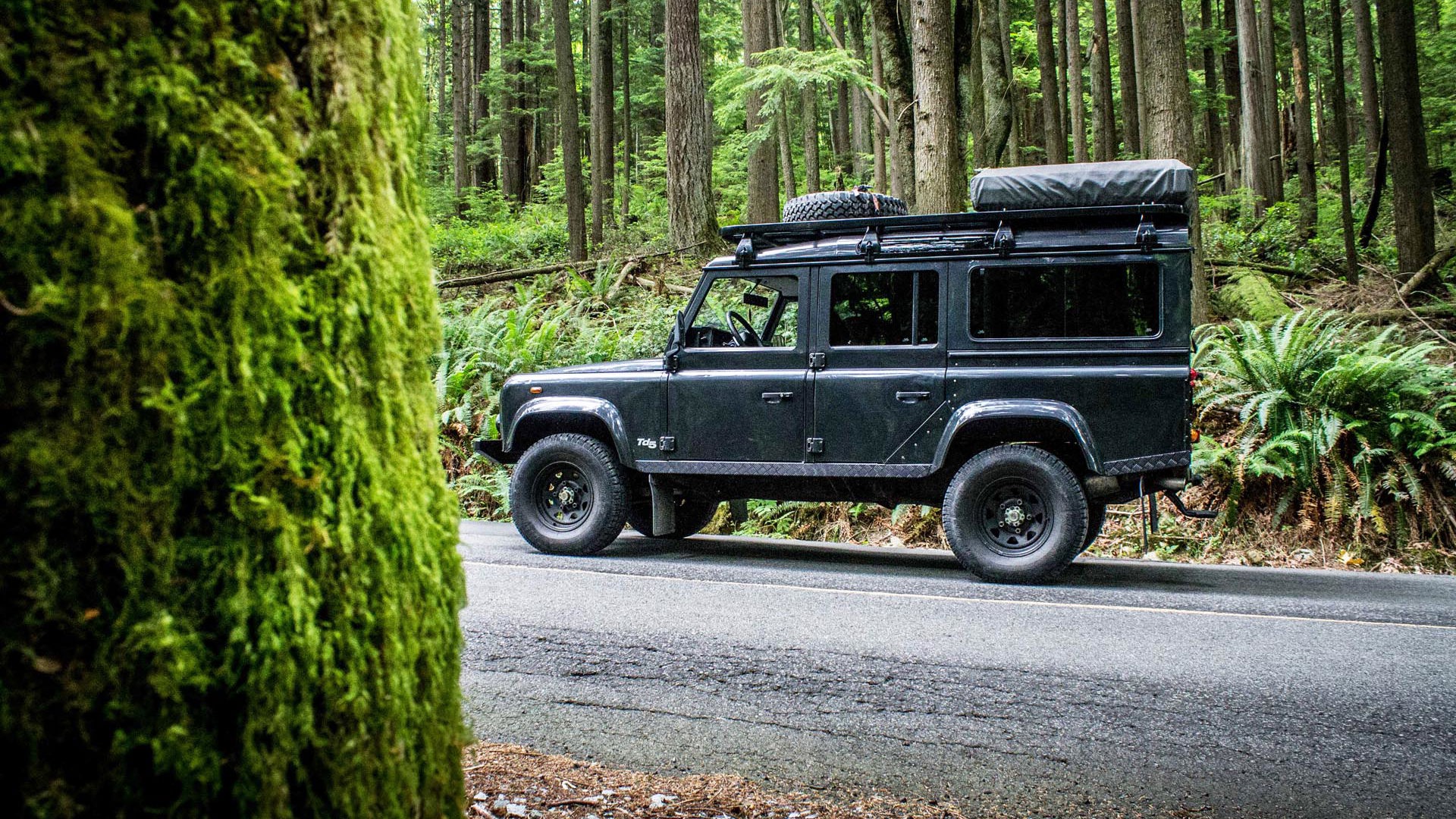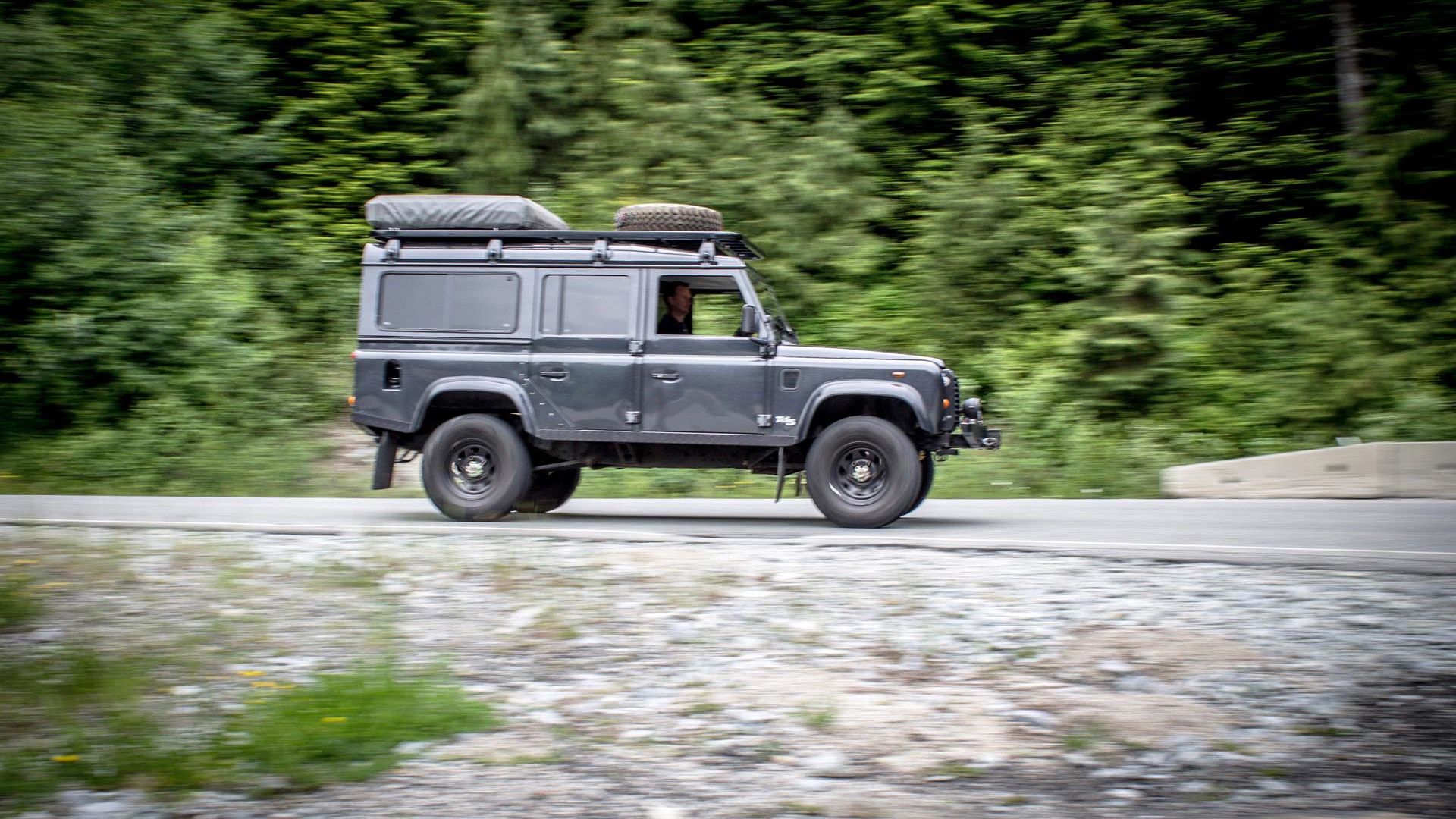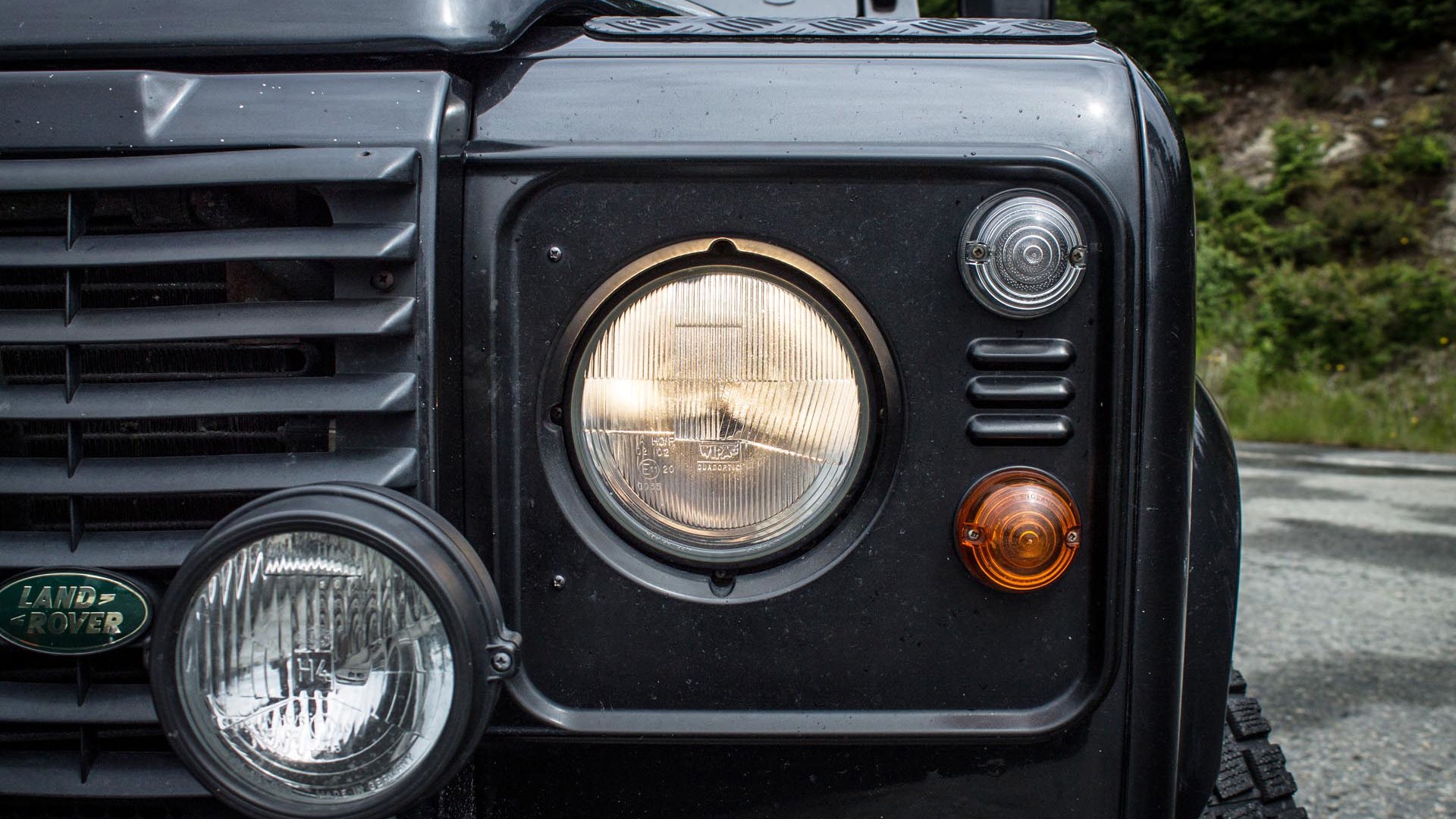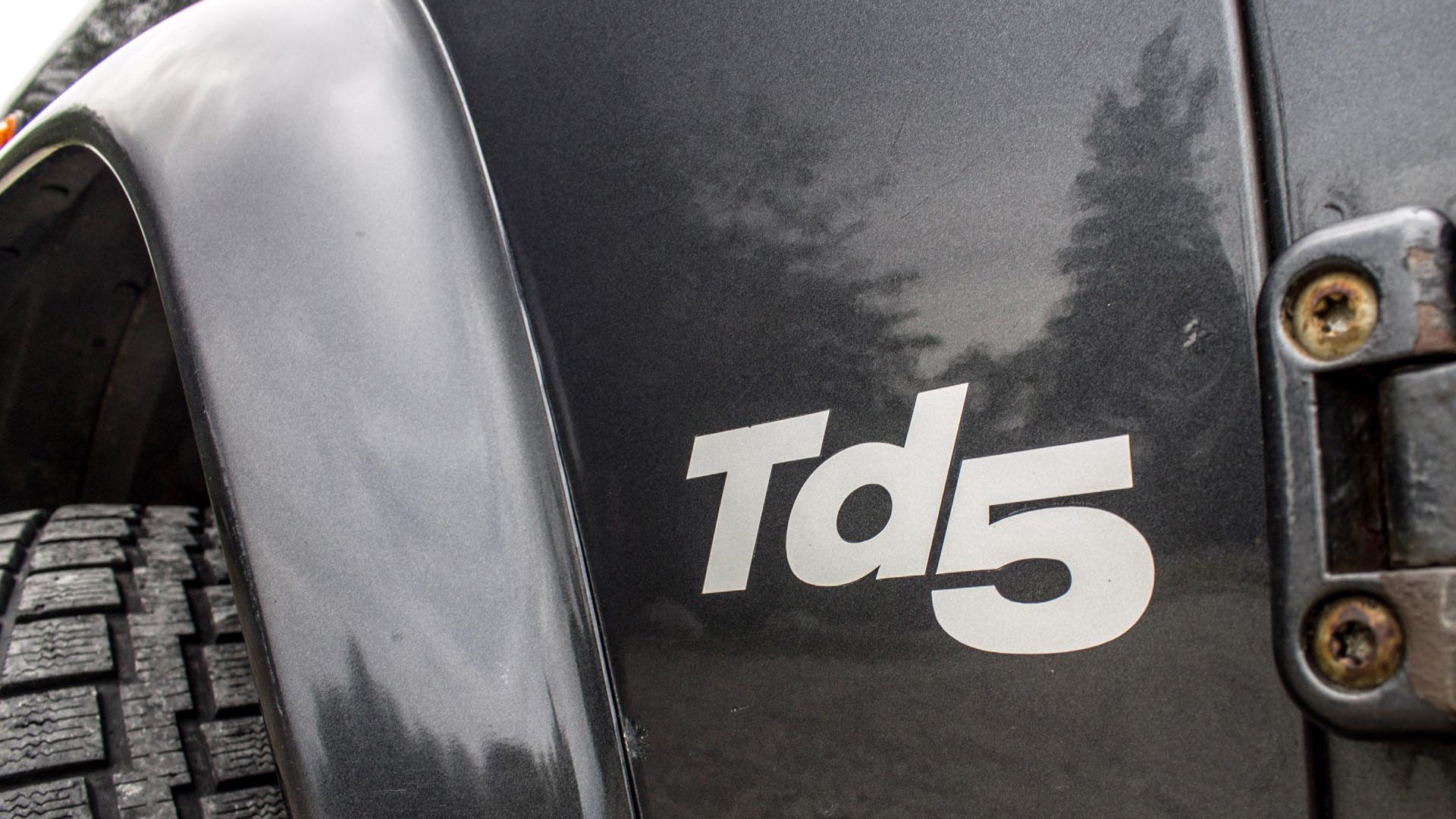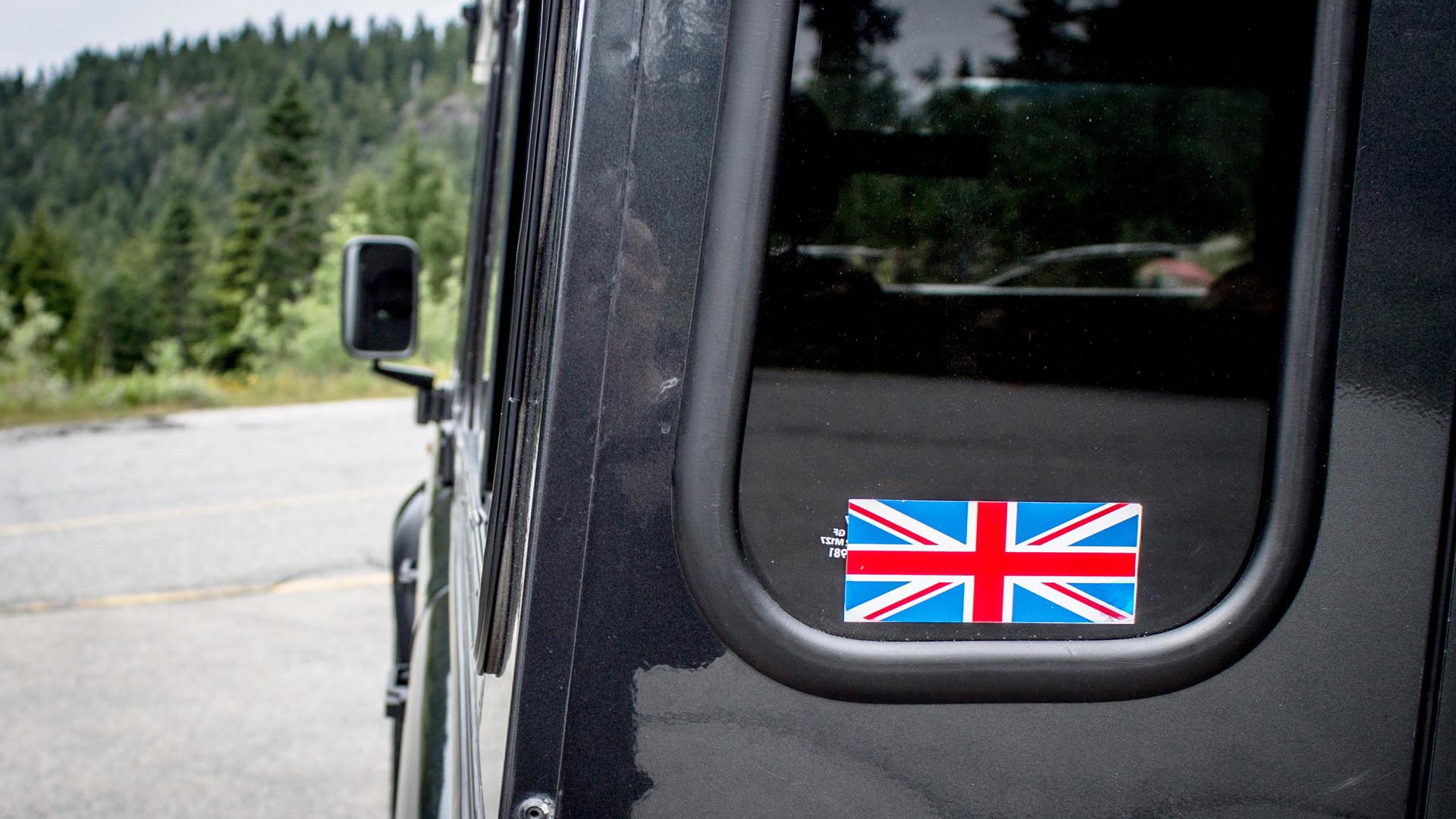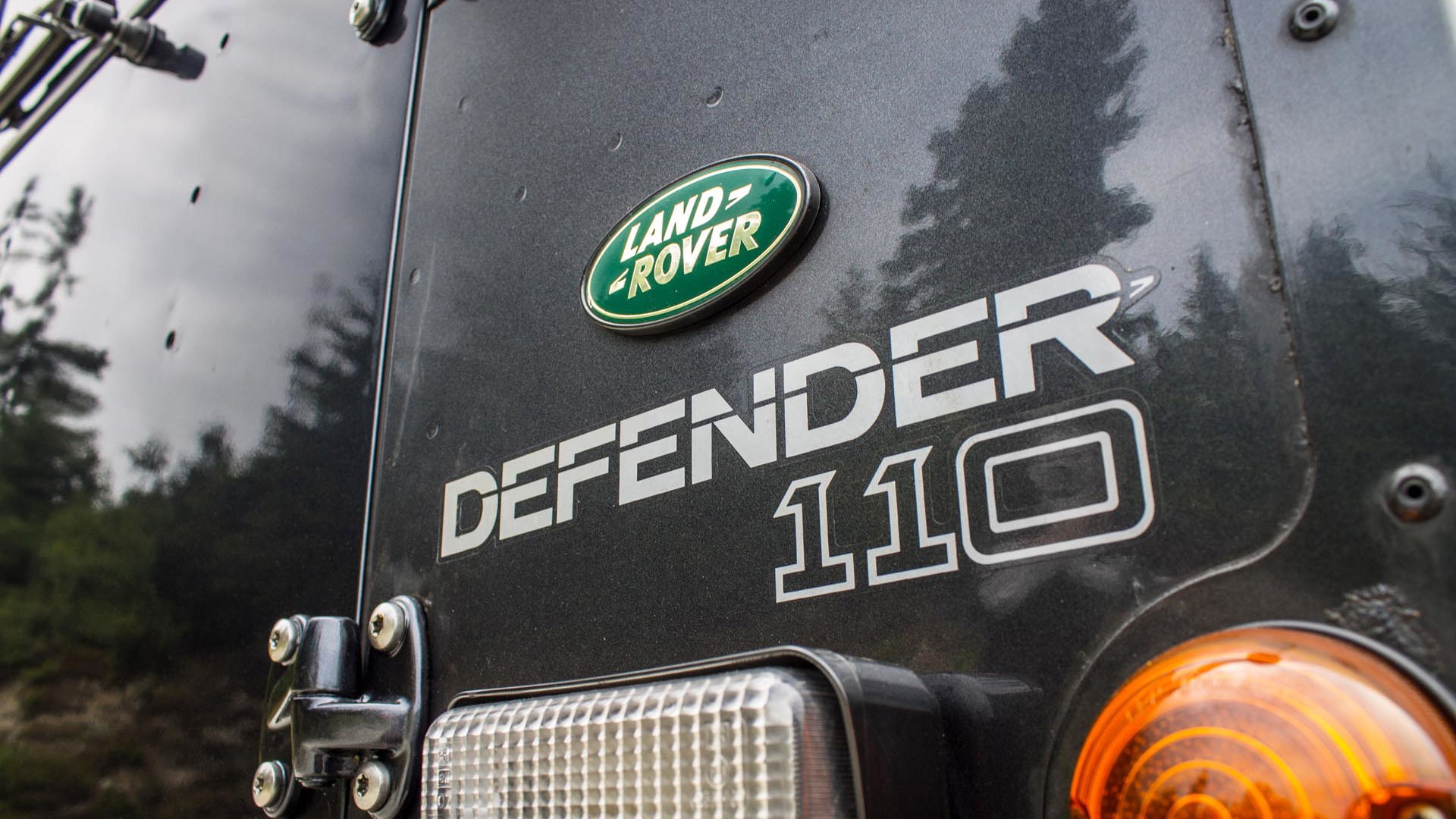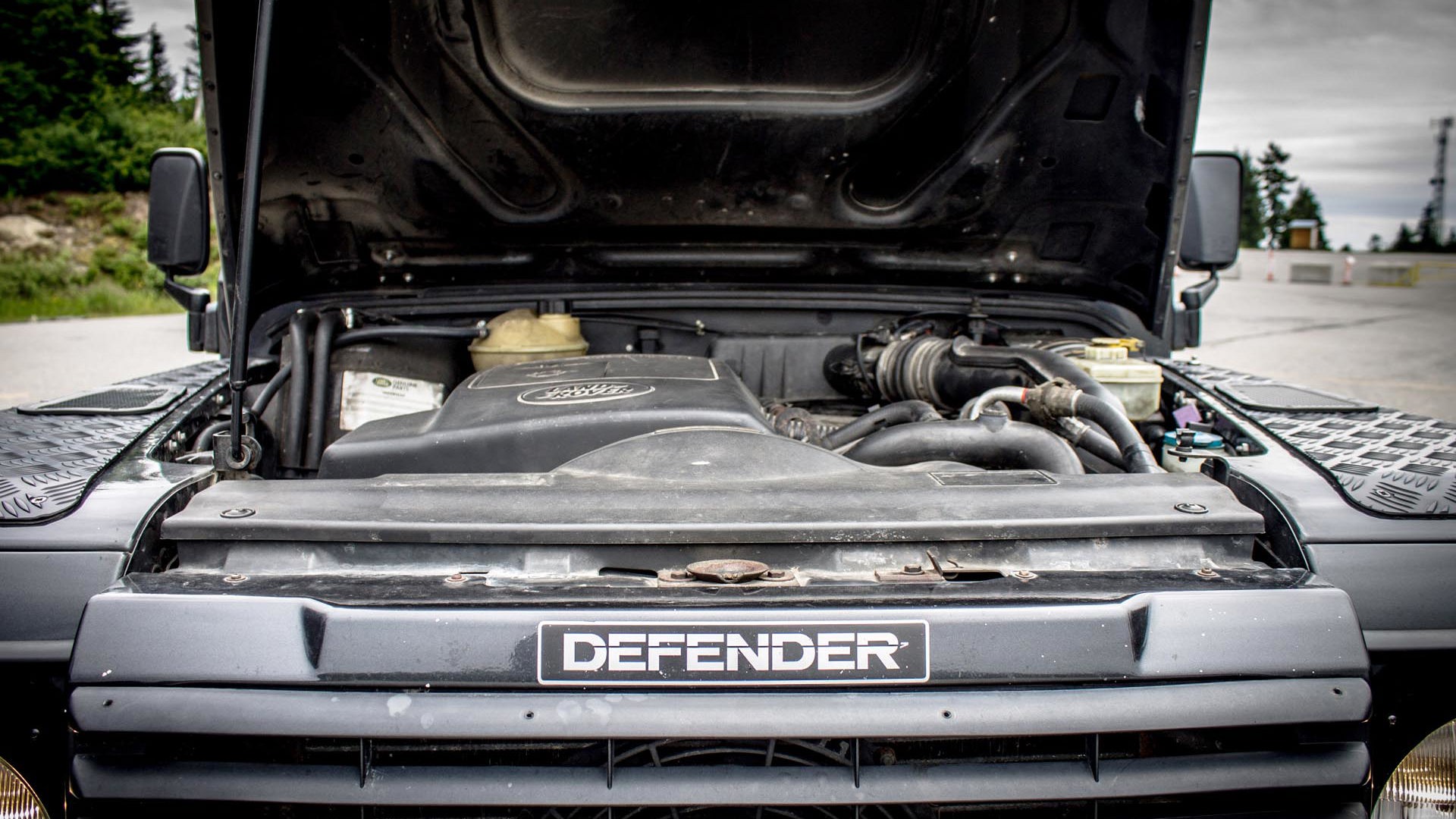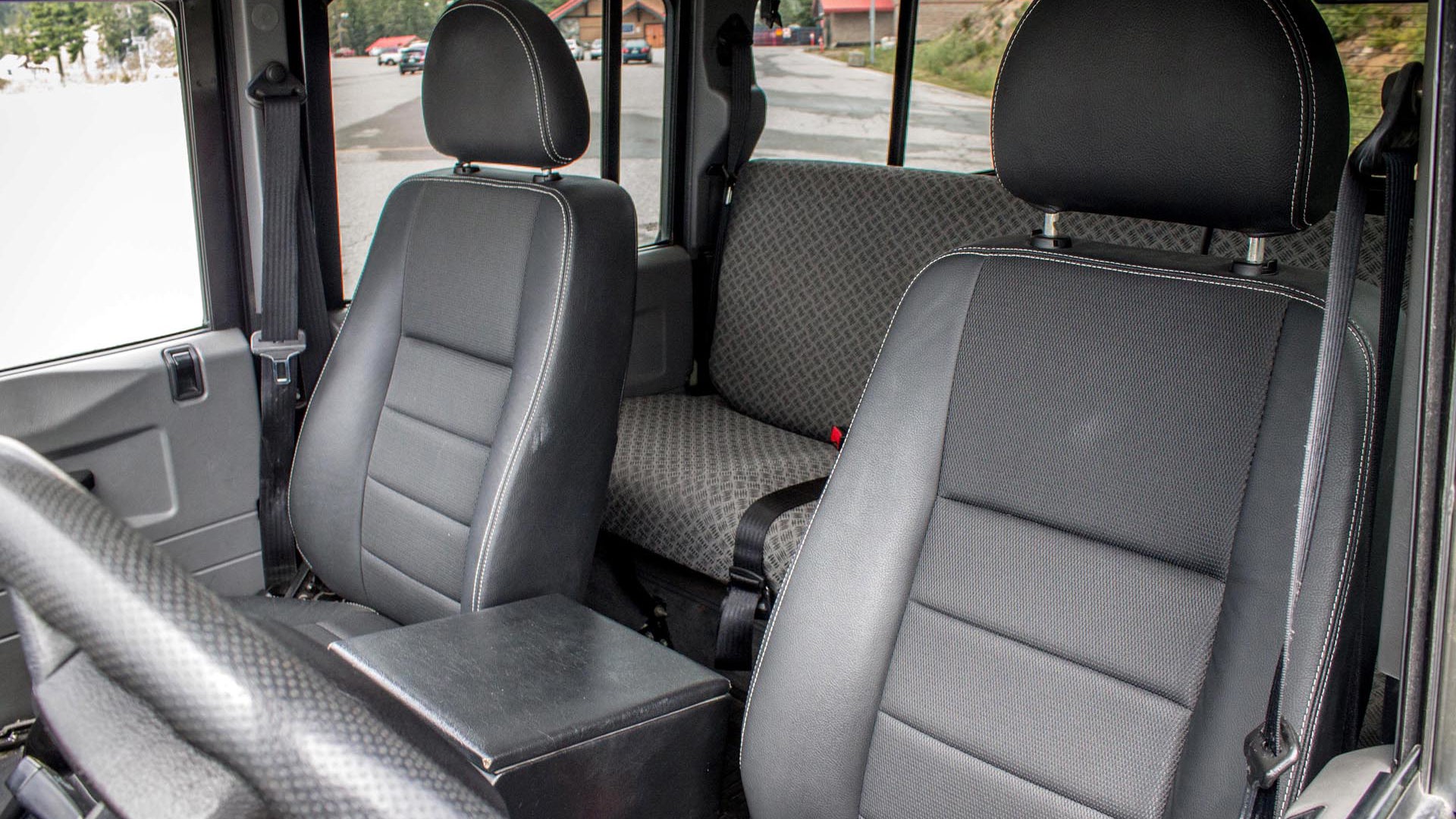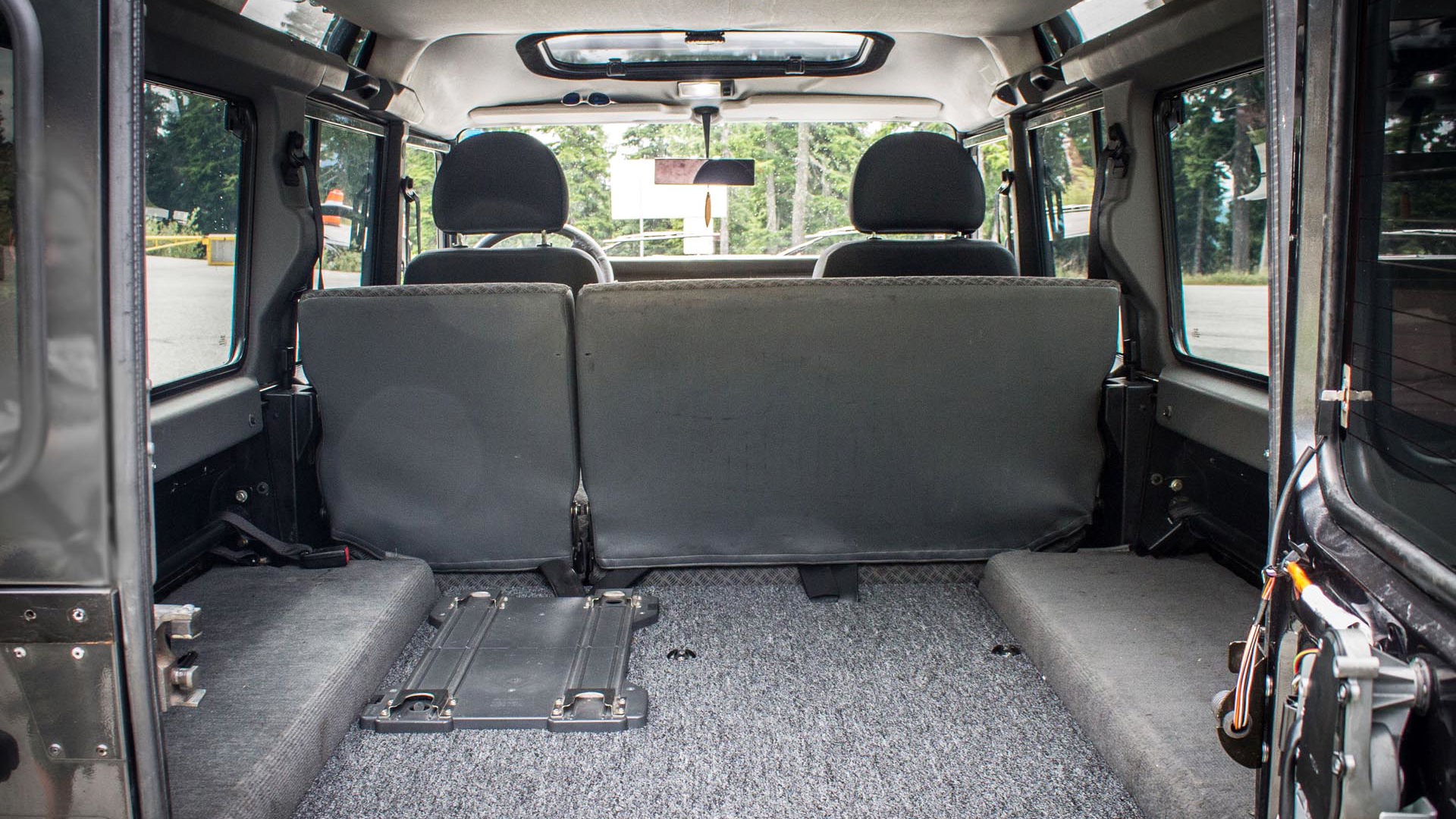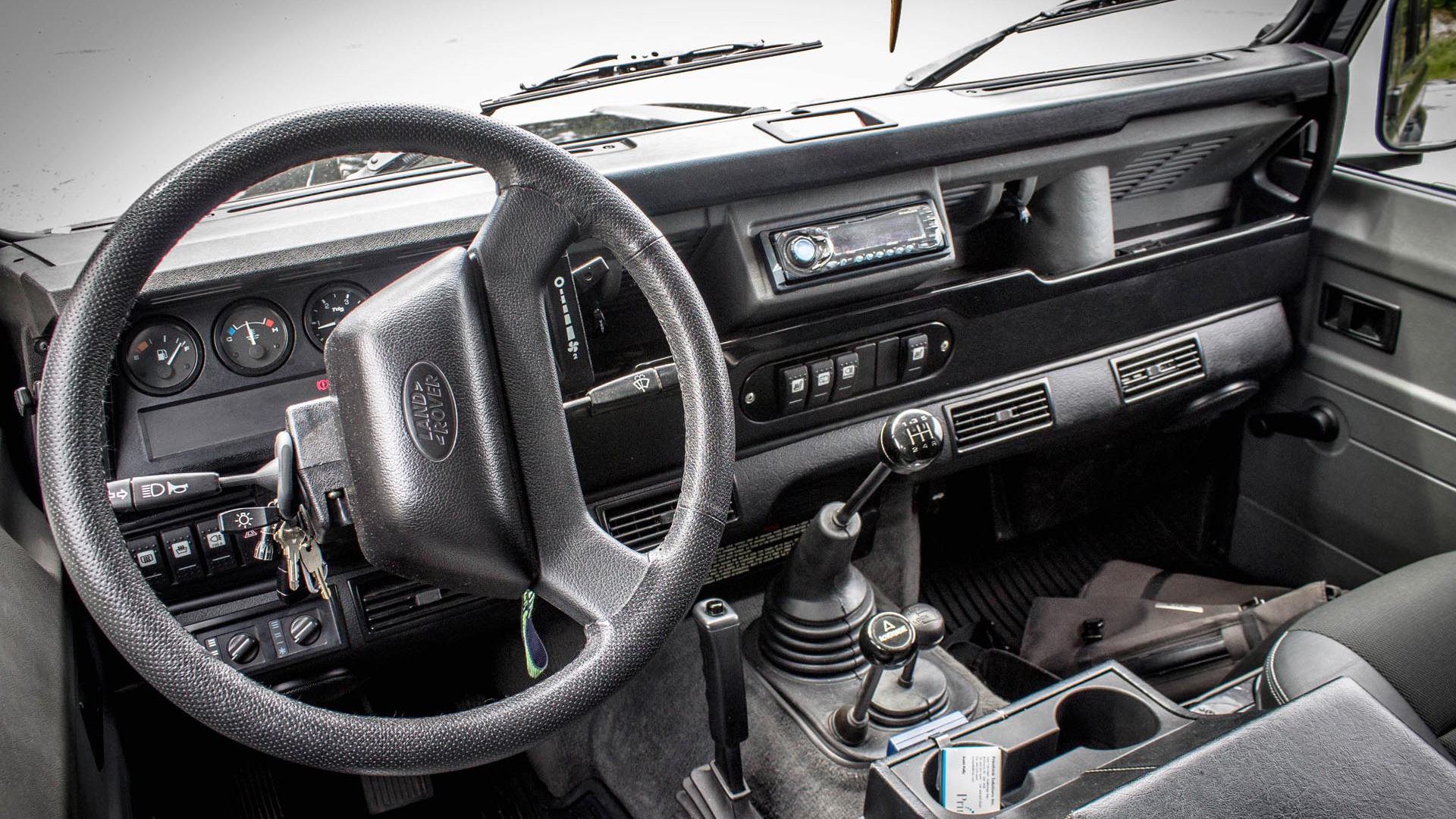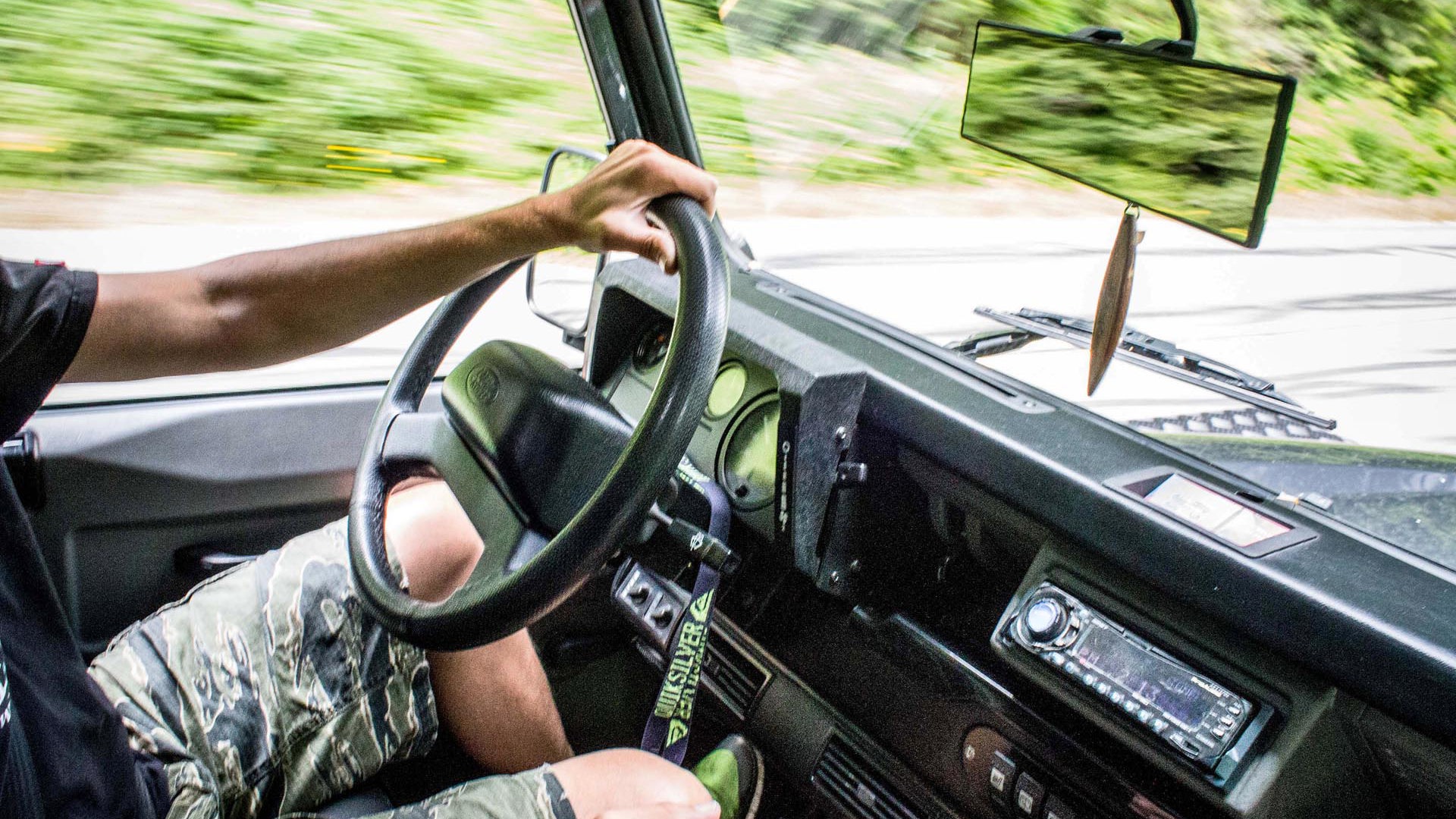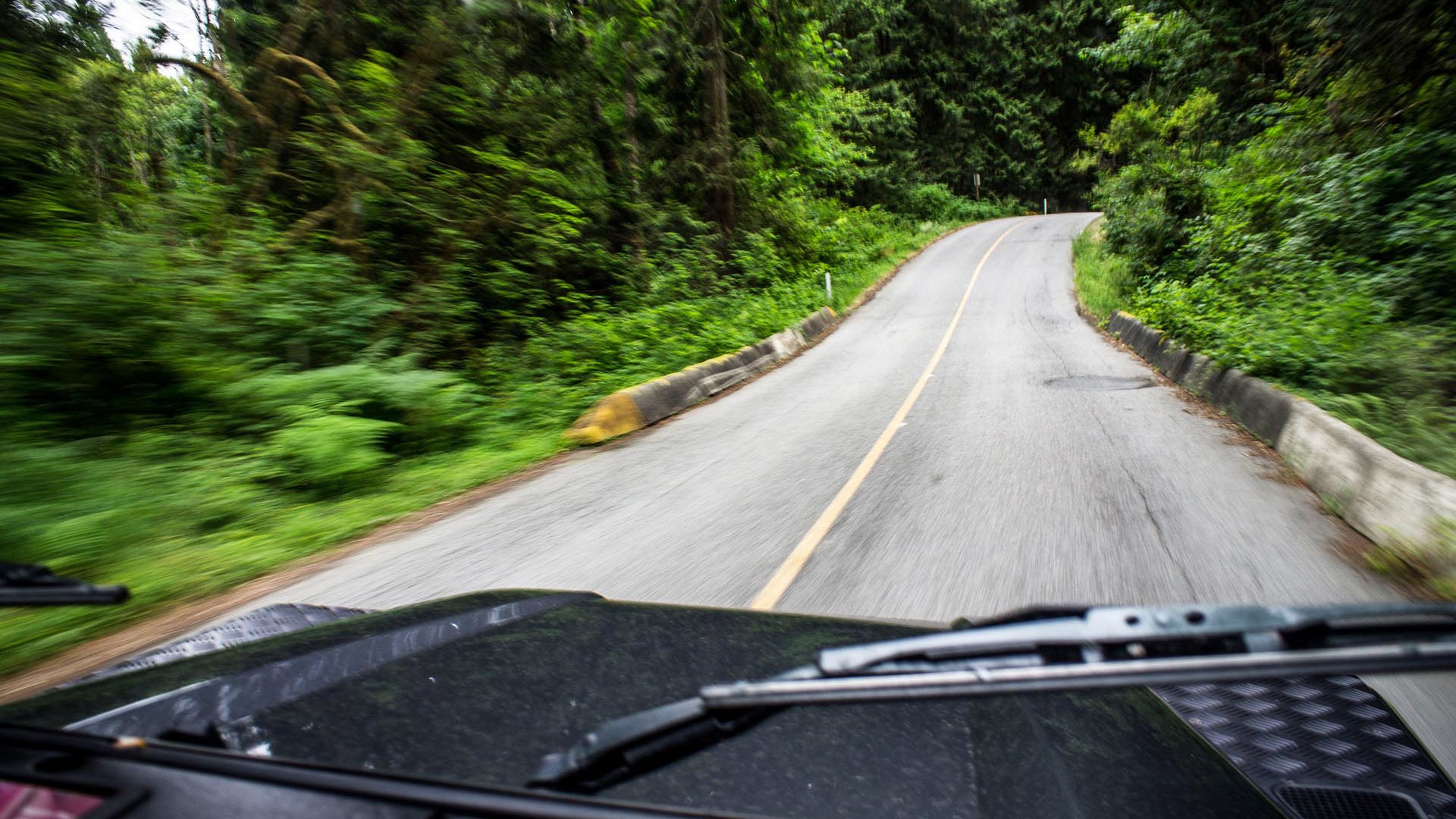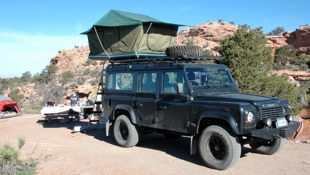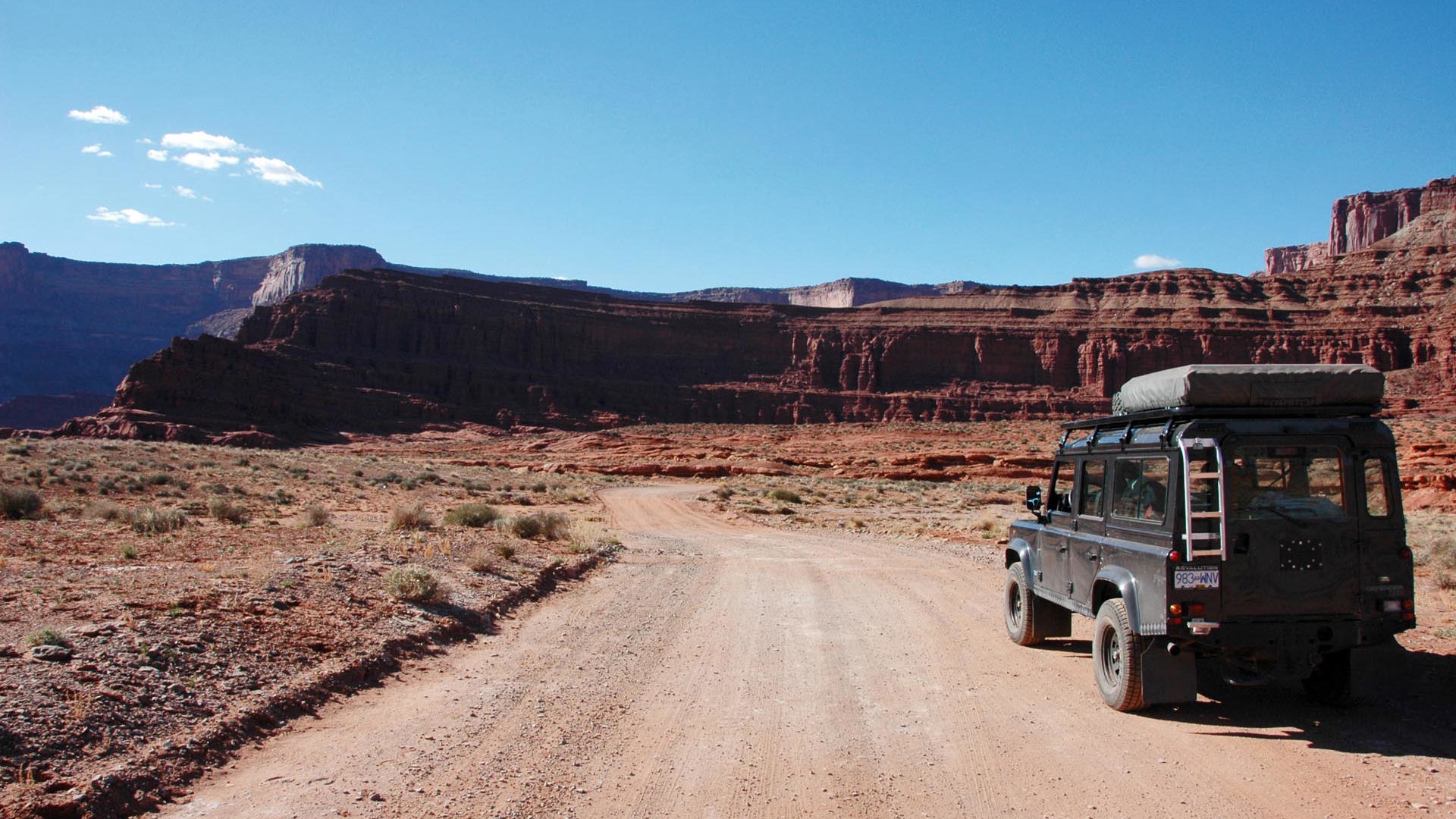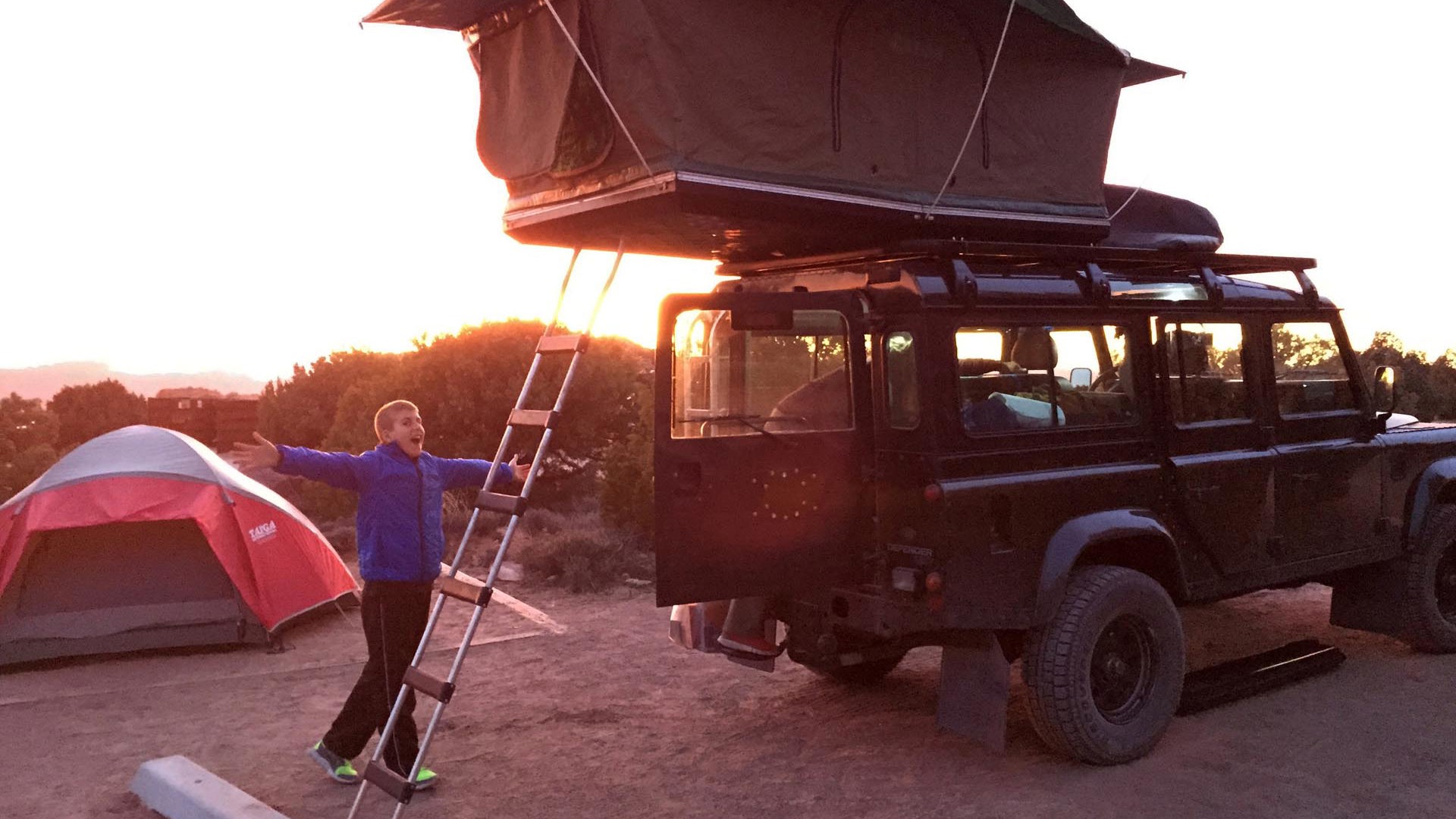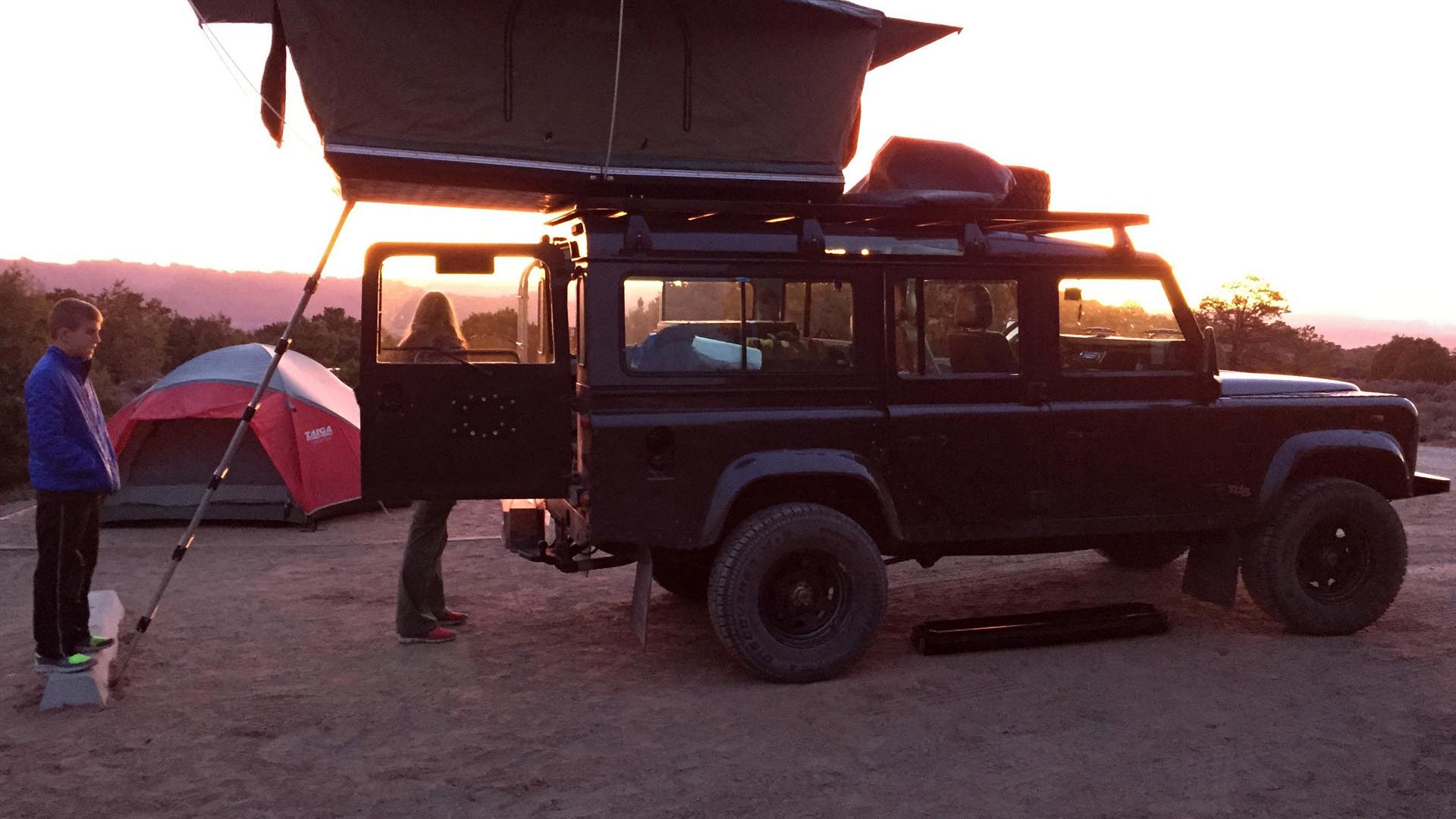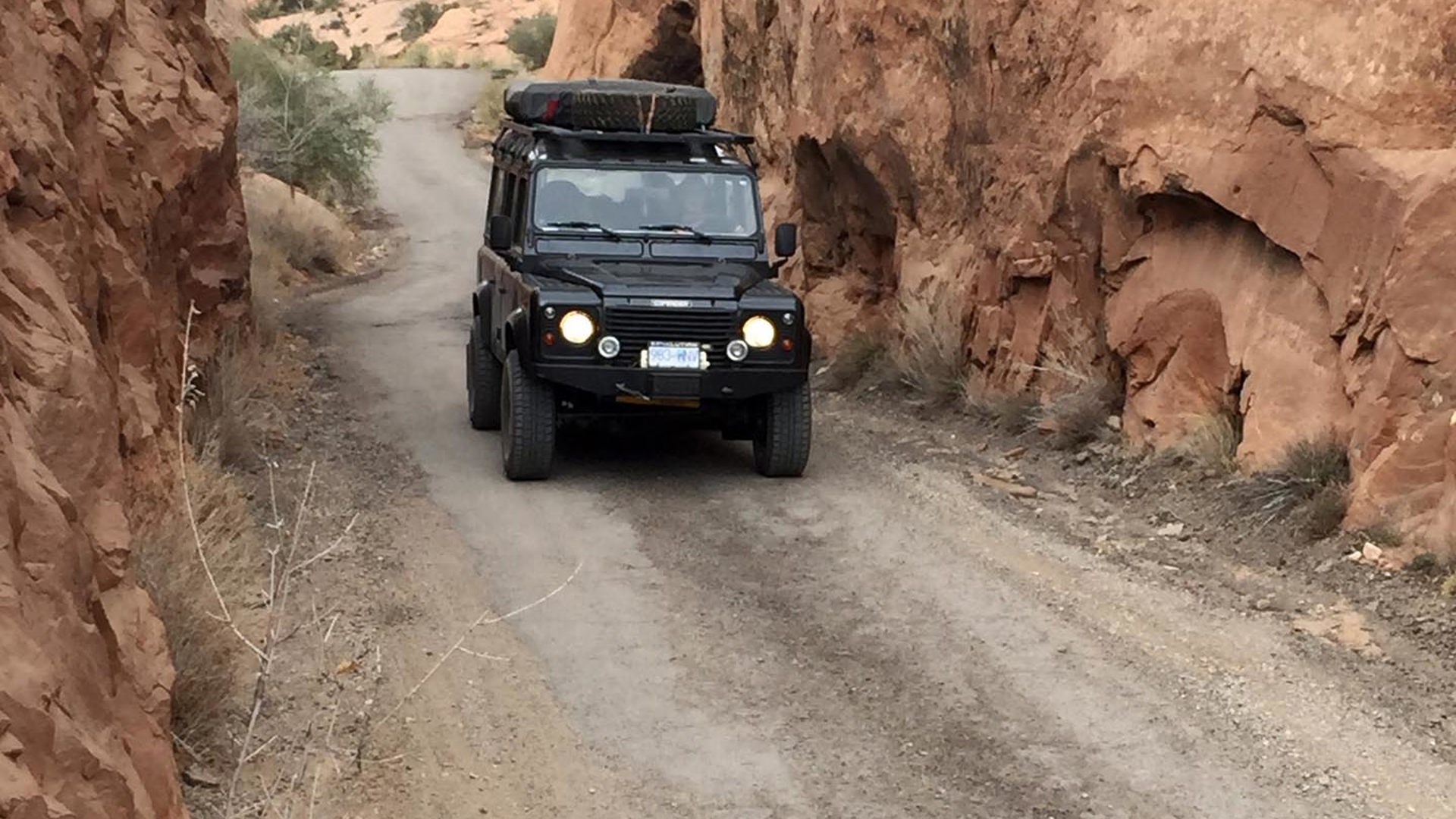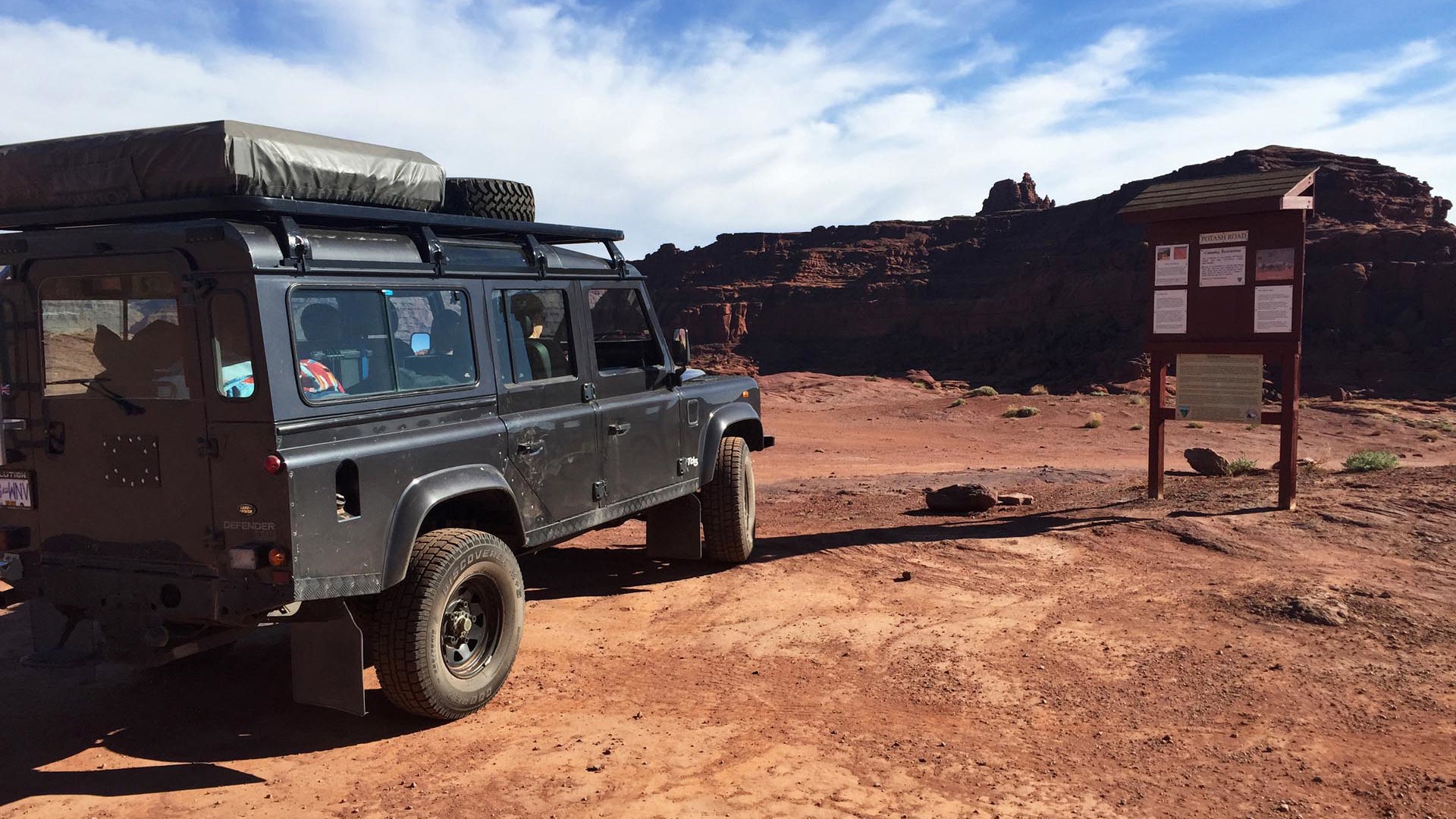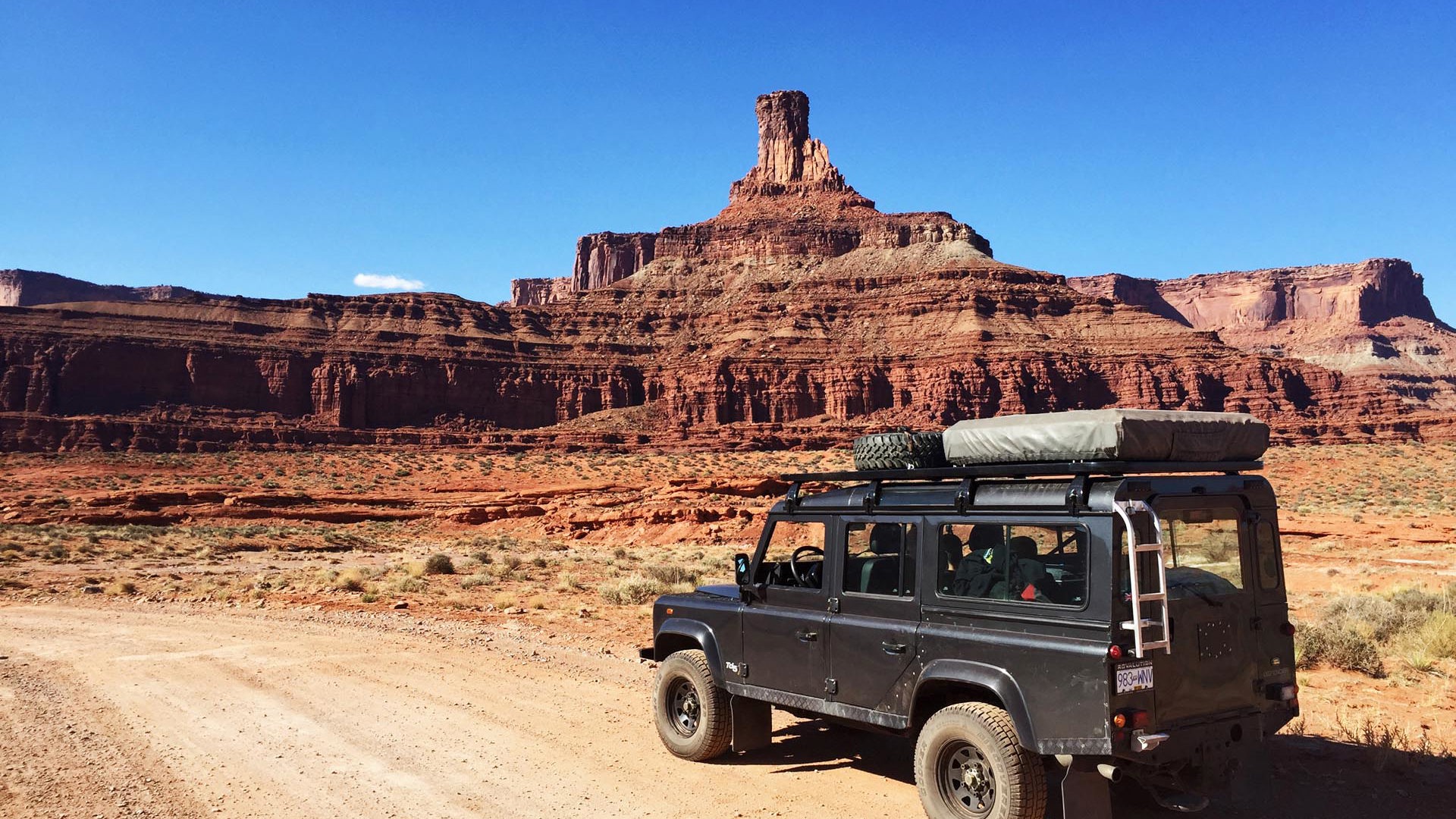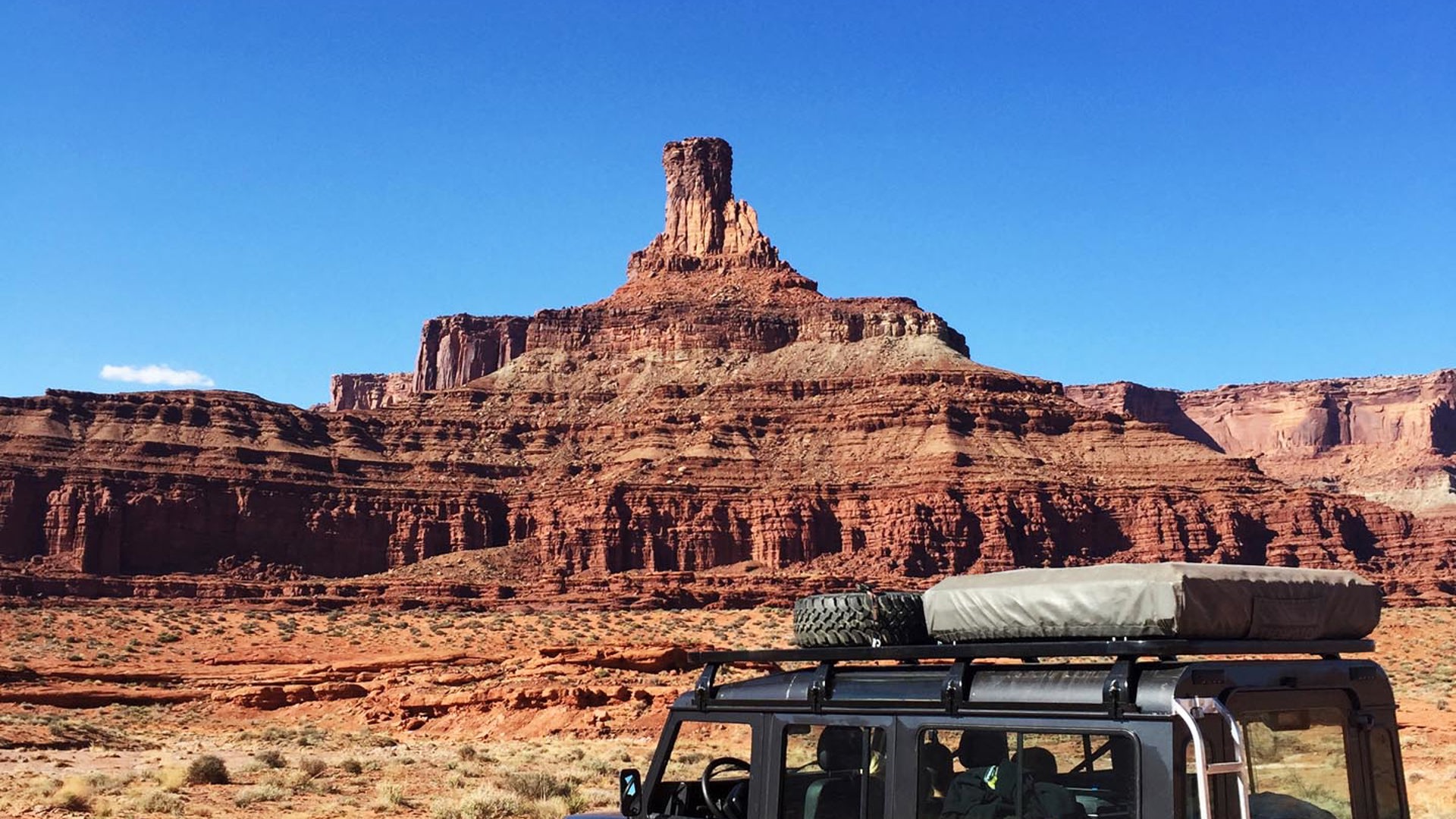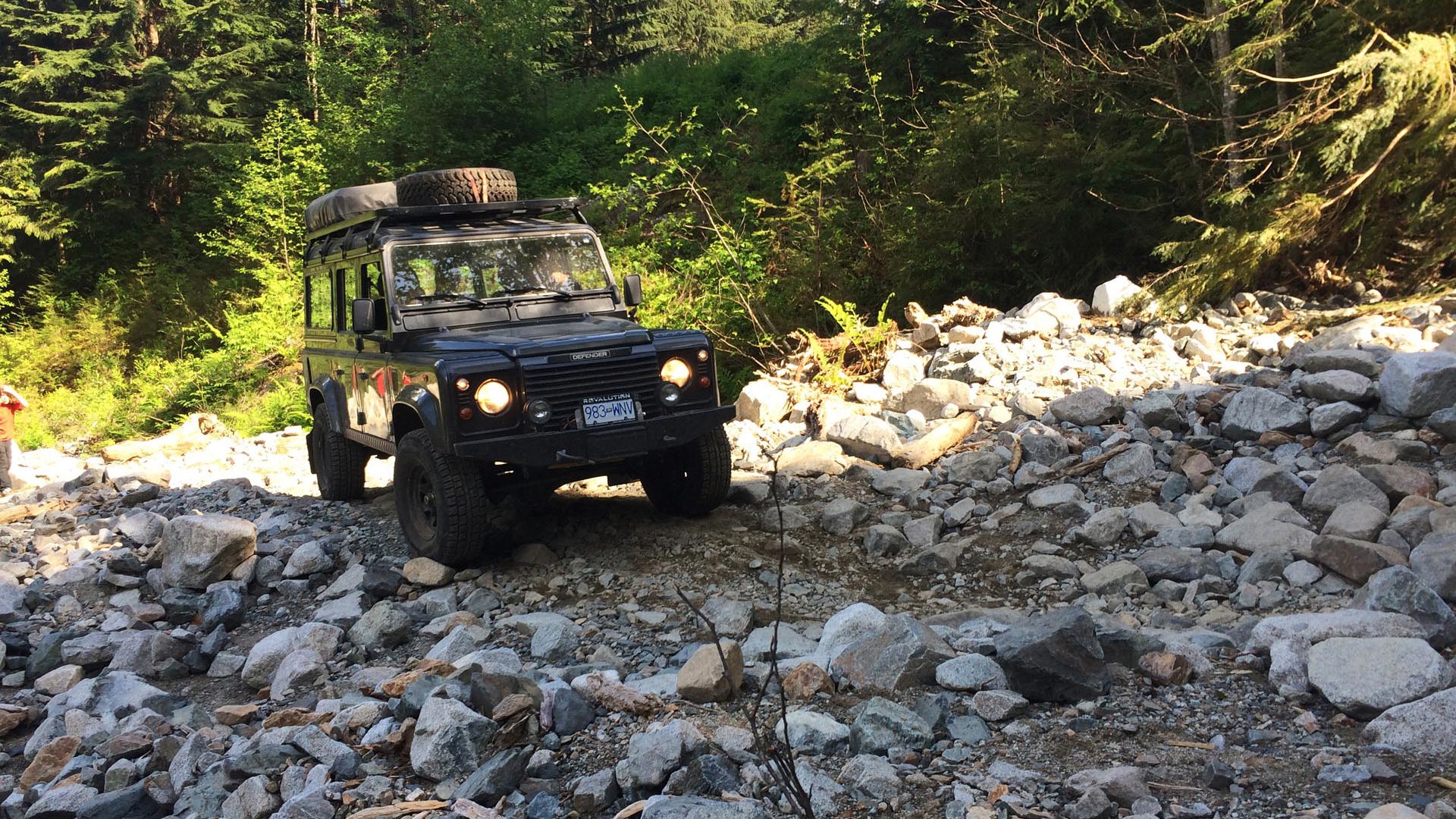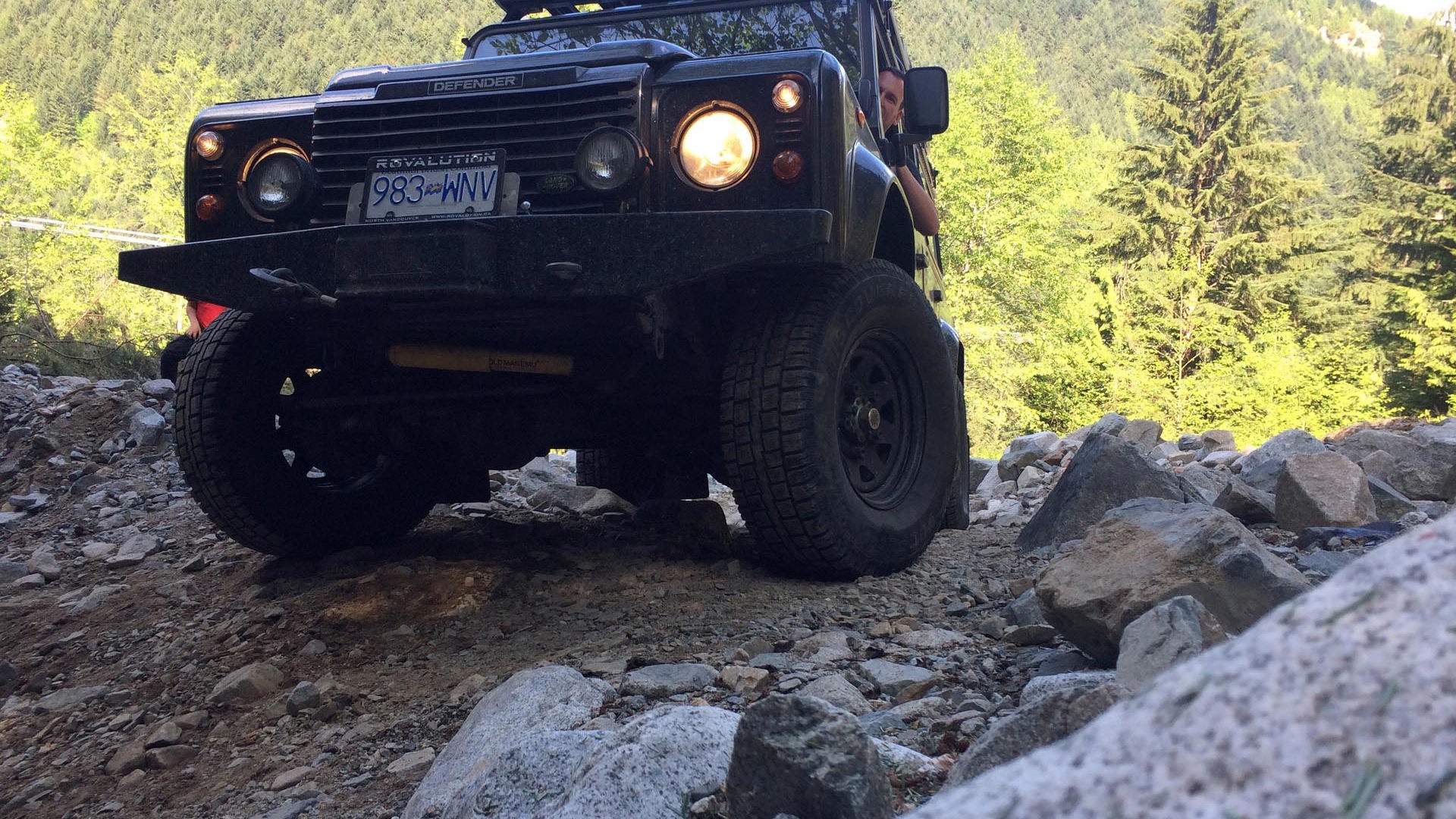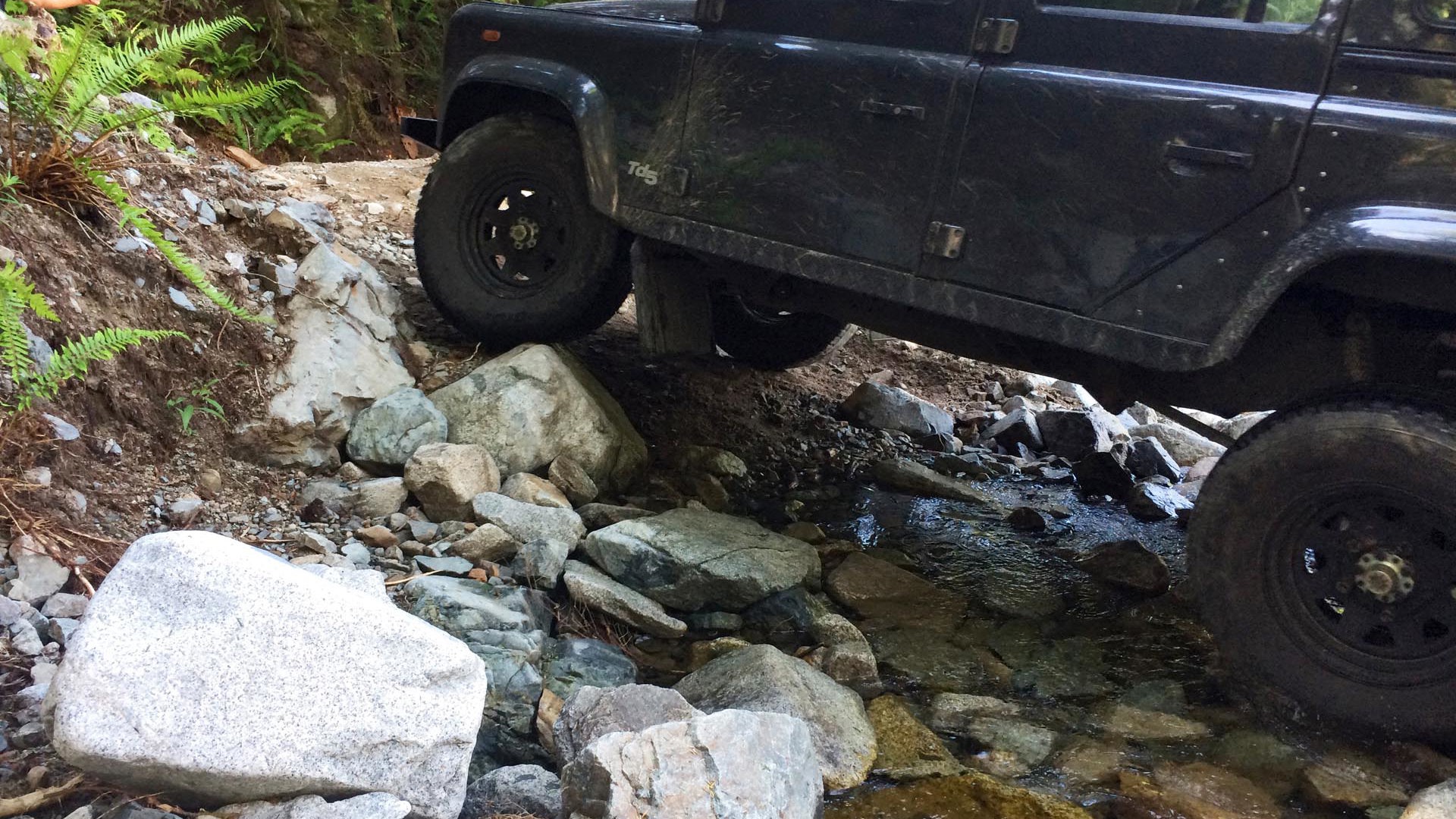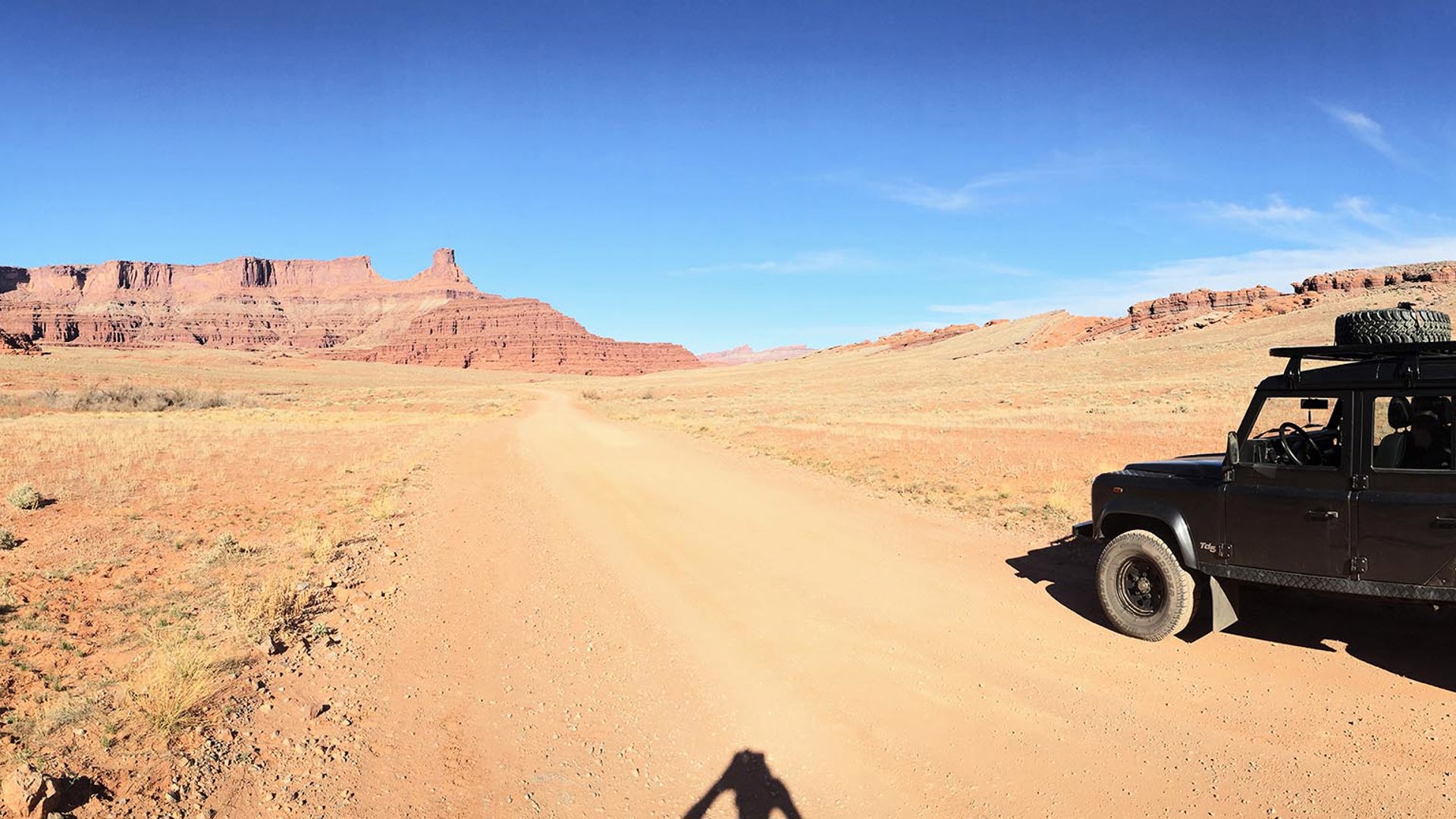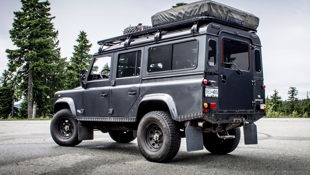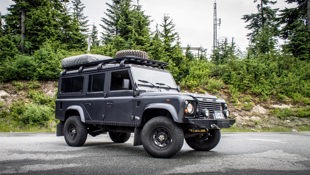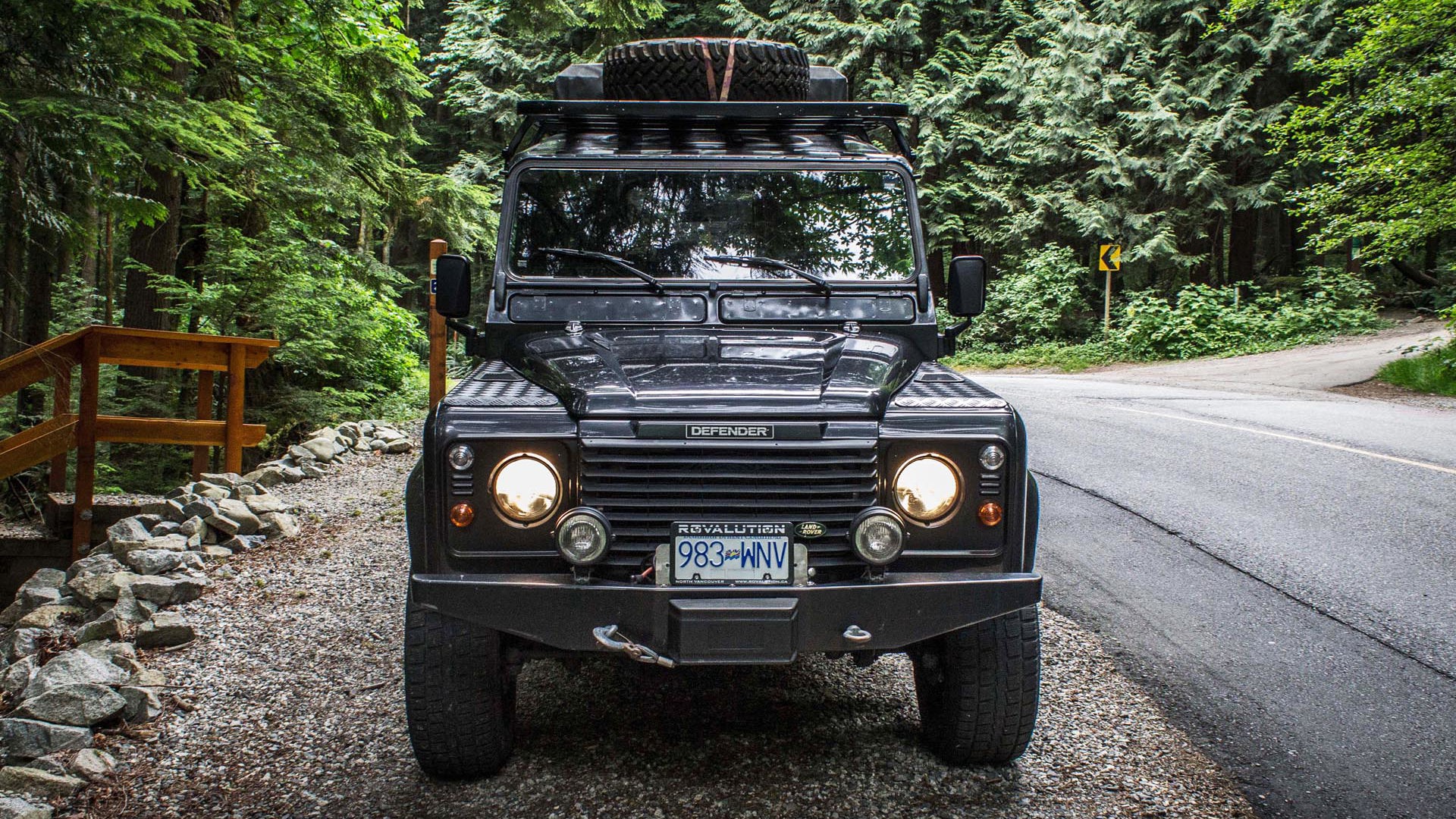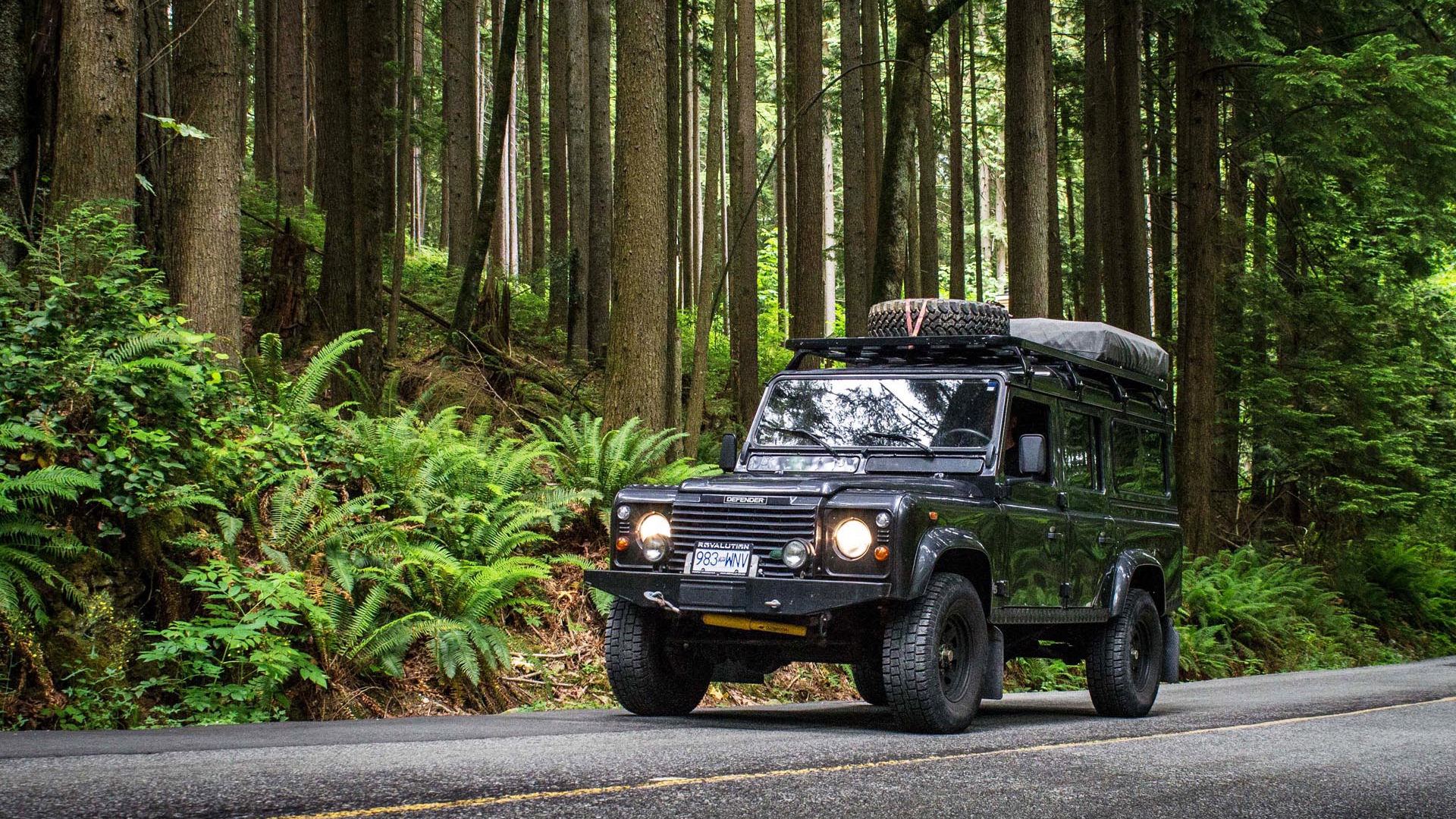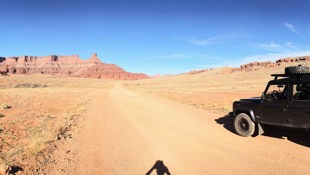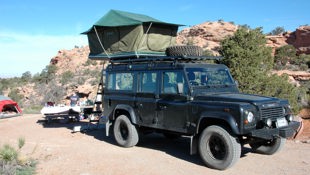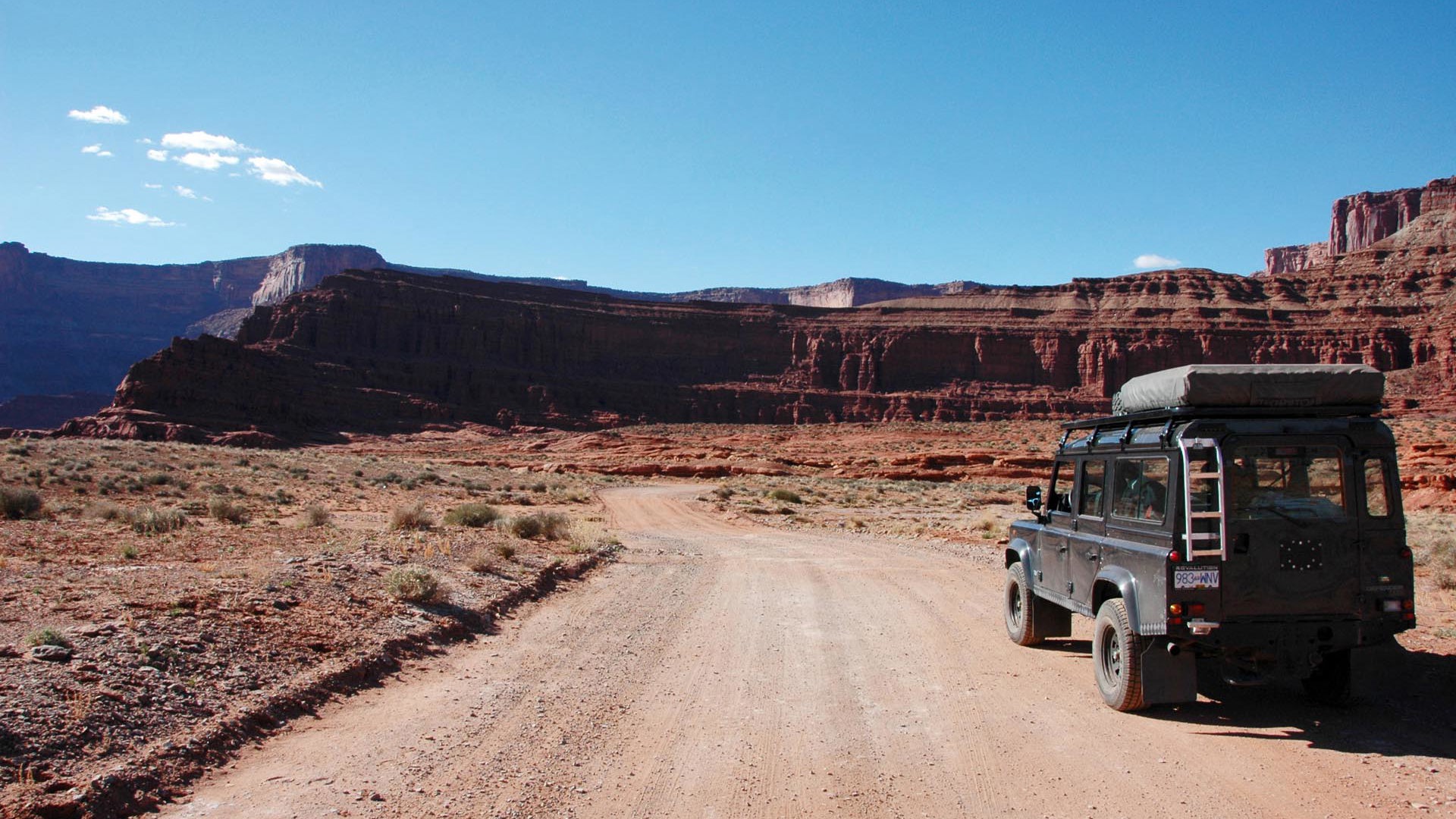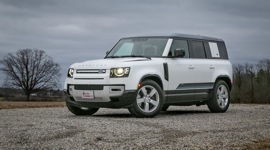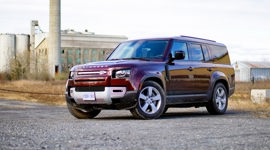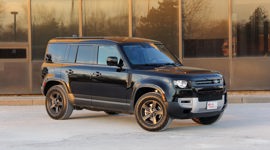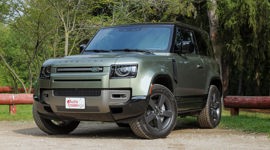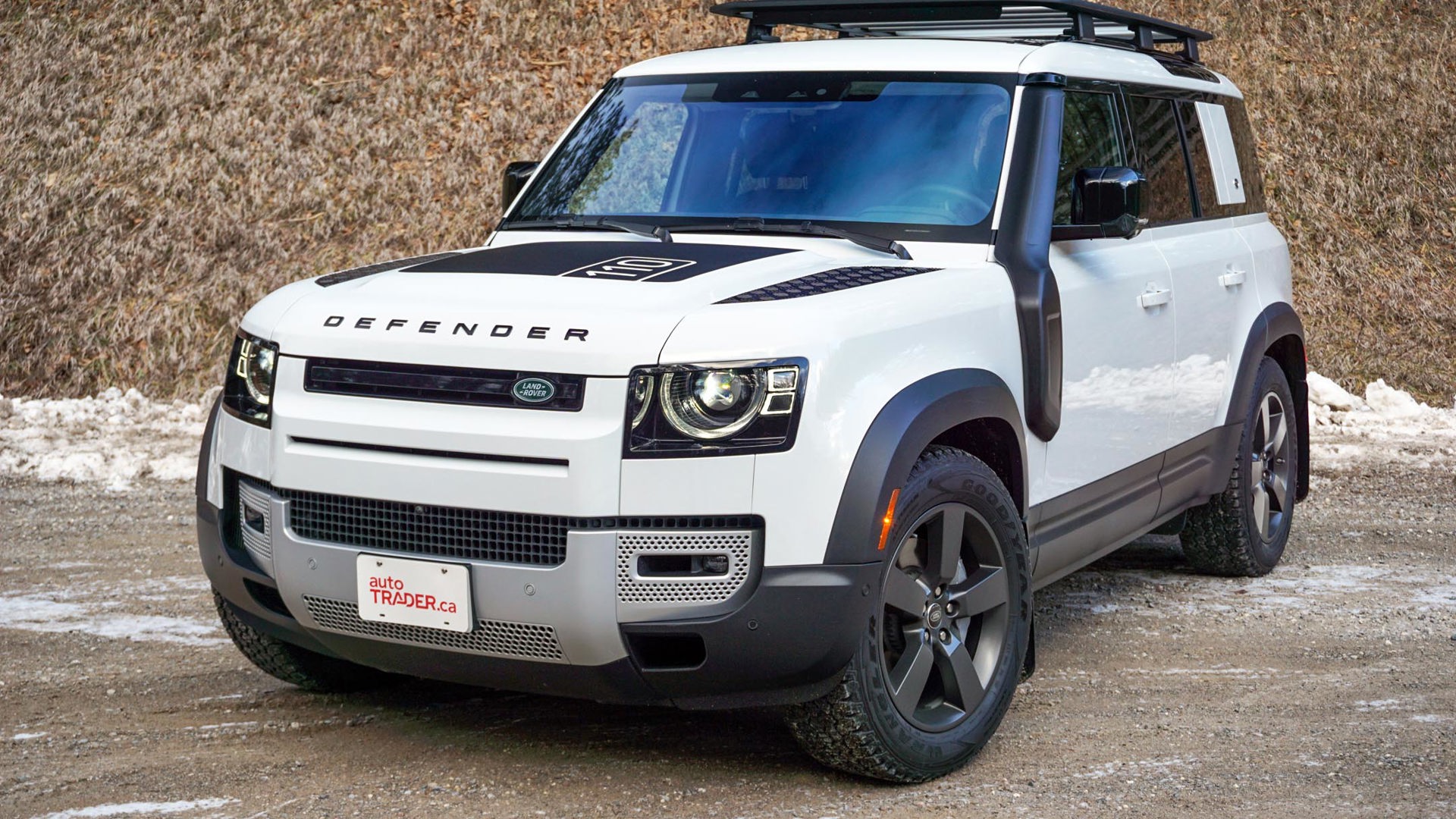It's honest. If the appeal of the Land Rover Defender can be summed up in one brief sentence, it's that this rugged little truck doesn't have much in the way of pretense.
The Defender is a last-of-breed machine that stays true to its roots. Perhaps that's why everyone likes it so much.
Not that people don't try to gussy them up. Heck, even Land Rover themselves make an Autobiography version of the Defender with tacked-on luxuries stolen from the classier Range Rover. But that's all wrong – like the Jeep Wrangler, the Defender is a last-of-breed machine that stays true to its roots. Perhaps that's why everyone likes it so much.
I certainly do. I grew up driving early Land Rovers long before anyone thought to install leather and enormous alloy wheels. Like a Lotus, there's little here to divorce you from the experience of driving, just steel, oil, glass, combustion, and rubber. Proper Land Rovers should never be too clean. They should never be smooth. They should never be entirely finished.
This one belongs to a neighbour of mine, Scott Pelly. He's had a few Defenders over the years, including a much-missed 90, and found this one locally through introduction to an importer. It's originally a German vehicle, and thanks to Canada's grey market import rules, was brought in at just over fifteen years old.
It's a child's drawing of a truck, all straight lines and big tires. The shape of the Defender hasn't really changed much over the years, and if you start looking closer, you'll see that the similarities to its 1950s and 1960s ancestors are right there in front of you. It actually looks like you could pull the doors off my old '76 and bolt them right on.
This Meccano-like simplicity works the other way too, and has allowed Scott to attach a fresh rear door off a later-model Puma Defender. He's also got a skid full of spares from the UK, everything from extra rear doors to a new rear seat from a nearly-new Defender. The front seats are already replaced with heated units from a much newer car. Like all British cars, installing them raised a few issues, but it's a Land Rover: bolting on whatever you want is just a case of having a large enough hammer and access to a large vocabulary of swear words.
If the short-wheelbase 90 is the Defender that everyone lusts after as a toy, then the 110 is the workhorse machine. It's big enough for the whole family, and that's important, because this is a vehicle that kids simply fall in love with.
Pelly's two children are pretty typical, into hockey and video games and the like, but when the whole family loaded up their Defender and headed south to the Mars-like geology of Moab, something pretty amazing happened. No iPads. No getting glued to a screen. Instead, it was a proper family road trip, following progress on the map, watching out for landmarks, checking out the landscape. That's the thing about a proper Land Rover – it turns life into an expedition.
I have a little theory that the reason emerging generations of kids seem to care less about cars than they once did is that we've completely isolated them from the experience of travel. We plonk them in the back seat of some high-waisted crossover, down low so they can see nothing but the sky. They might feel a speed bump or two, but for the most part you might as well be in an elevator; you climb in at home and you get out at school. It's boring. It's dull. It feels like a waste of time.
But perched in the instantly familiar passenger seat of Scott's Defender, you can't be bored. There's simply too much going on: the 110 rolls into the corners, jouncing along merrily over rougher pavement. The amount of greenhouse is immense, big square windows that let you see everything from the scenery to the wildlife. For instance, just look at that idiot in the Ford F-250 Super Duty, driving along in the fast lane and texting. Hand me that dart gun, Mr. Attenborough.
For a truck with clearly agricultural roots, the 110 is surprisingly comfortable. Pelly's had an overdrive fitted, which bumps the Defender's cruising speed up to the 75 mph (120 km/h) speed you need to keep up with traffic on America's desert highways. On the upper levels highway, the five-cylinder diesel hums along happily at low revs.
This 110 is daily-driven, and while the family also has a theoretically more sensible Mercedes GL diesel, if there's ever a need to go anywhere, they load up the Land Rover. Underground parking is an impossibility with the roof rack, but other than that, it's actually decently maneuverable. Also, the gunmetal-grey paint job gives off a whiff of Special Air Services, so people tend to make room when you're merging.
The cockpit of this machine is like a time warp to my childhood. It's a quarter-century newer than the old Landies I grew up in, but the heater controls are exactly the same. So are the control stalks, and you can still pop open the front vents to let fresh air in. And I swear the handles to do so are the same ones you find on a Series I truck.
It's a bit like an air-cooled Porsche 911; yes the model years change, but the DNA doesn't. The shape is the same. The driving experience is the same. Things get a little faster, but the elemental nature of the beast doesn't change. The Defender just takes things even further, not bothering to swap out stuff that's worked for decades.
However, there are a few advantages to seeking out a newer Defender like this TD5-powered machine. The 2.5L, five-cylinder turbodiesel is very tuneable and still makes decent torque when stock; ratings are 122 hp at 4,200rpm and 221 lb-ft at 1,950 rpm. There are all sorts of aftermarket companies getting big power out of the diesel or swapping in Corvette engines and the like, but stock power is totally fine.
Sliding behind the wheel of this thing is like coming home to Mom's shepherd pie. The pedals are the same cinderblock-sized lumps, the yard-long gearshift feels like a railway switch, and the steering wheel has the diameter and responsiveness of the helm of a Royal Navy square-rigged sailing ship.
It's just so much fun. You don't move fast, and if you want to bring the lever for the overdrive into play, things get even busier. The Defender responds best to slow, deliberate inputs, and can't be hurried. Grab fourth, wind down the window, and just cruise down the mountain road, slowing to a crawl for the hairpins.
A few weeks back, Pelly made the run up to Norton Lake, way up in the backcountry. The trail gets a bit hairy in places, but this is the kind of work the Defender was made for. It soldiered up the slopes, clambered over rocky creek beds; the turbodiesel whistled away like a teakettle, ladling out the torque.
Along the way it picked up a few scratches from the underbrush that hemmed in the trail – but that's just Land Rover pinstriping. Pelly has plans to repaint the entire truck when he gets the new rear doors on, but it's never going to be a garage queen or show vehicle.
Total cost for one of these things varies wildly, but is actually pretty reasonable when you factor in that they don't seem to depreciate. A newer TD5 like Pelly's will set you back about as much as a new crew-cab Toyota Tacoma. If you want to spend more, the sky's pretty much the limit, with Land Rover specialists willing to kit out your ride just as you like it. If you want to spend less, just keep your eyes open, as many of these trucks see regular hard use, and haven't always been repaired properly.
But basically, for about the same outlay as somebody might spend on sportscar for the weekends, you can get something a bit more real. The Land Rover Defender is a simple tool, a shovel, a hammer. It's uncomplicated and honest; there are certainly more reliable, sensible, and comfortable options for the money, but I'm not sure any of them are actually better.

